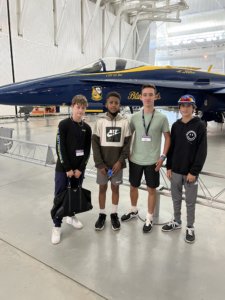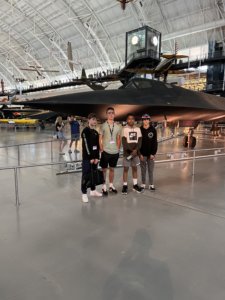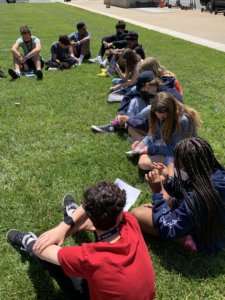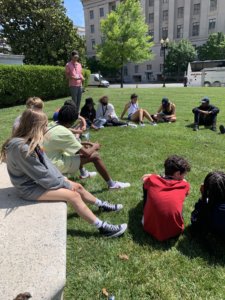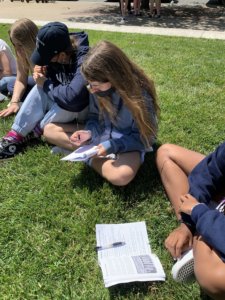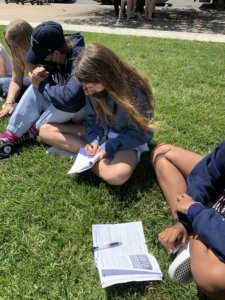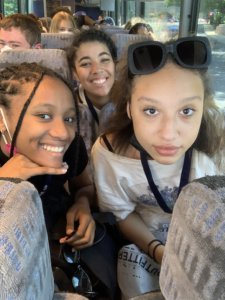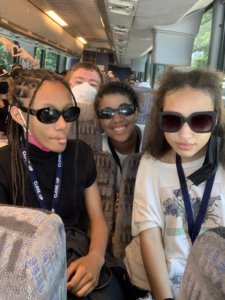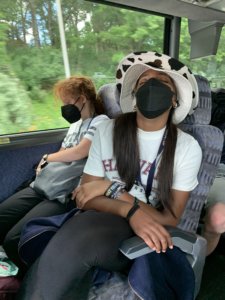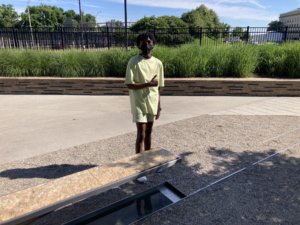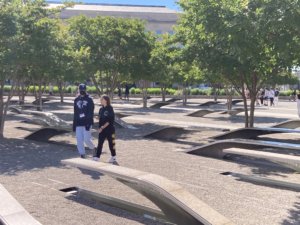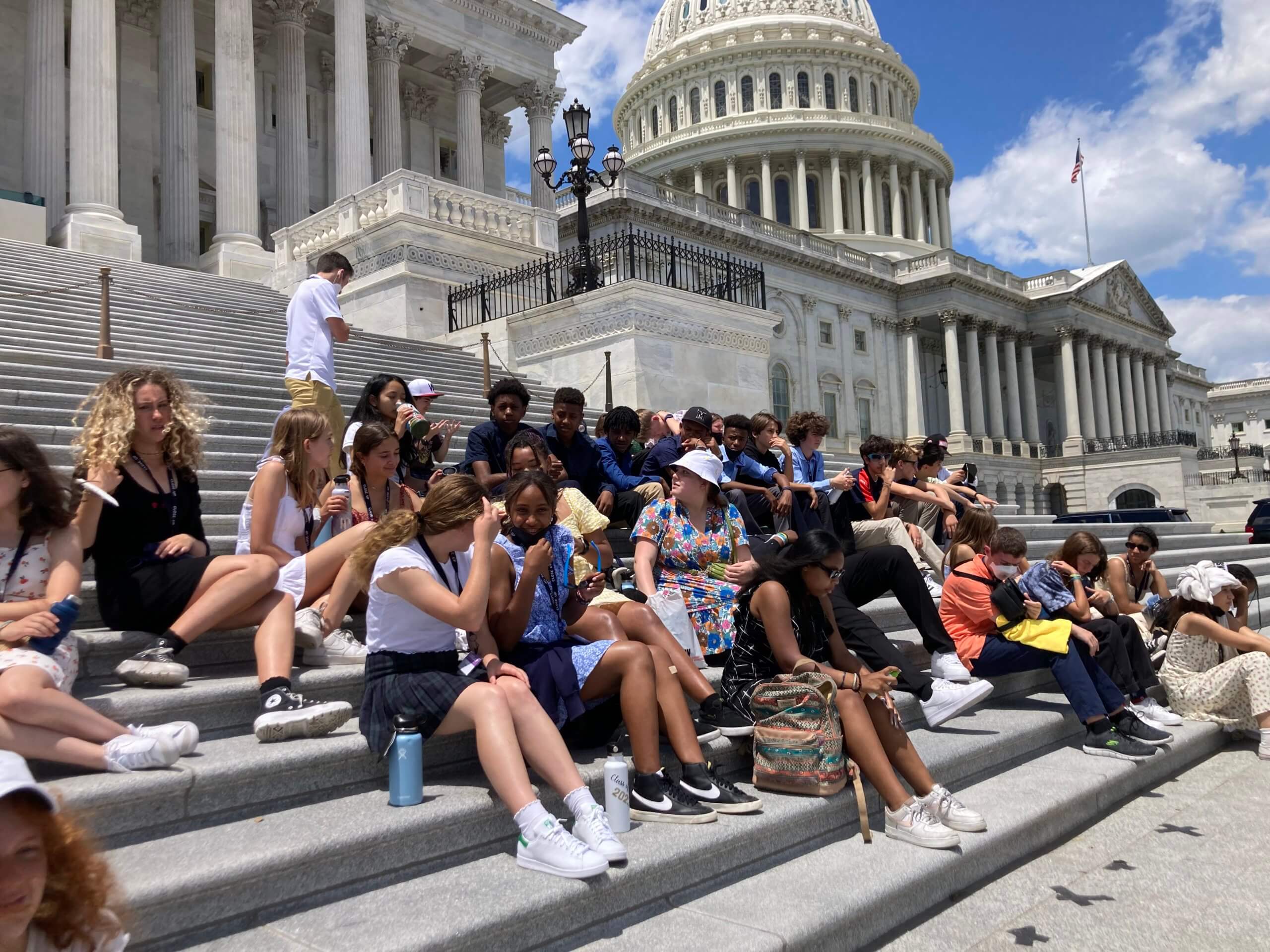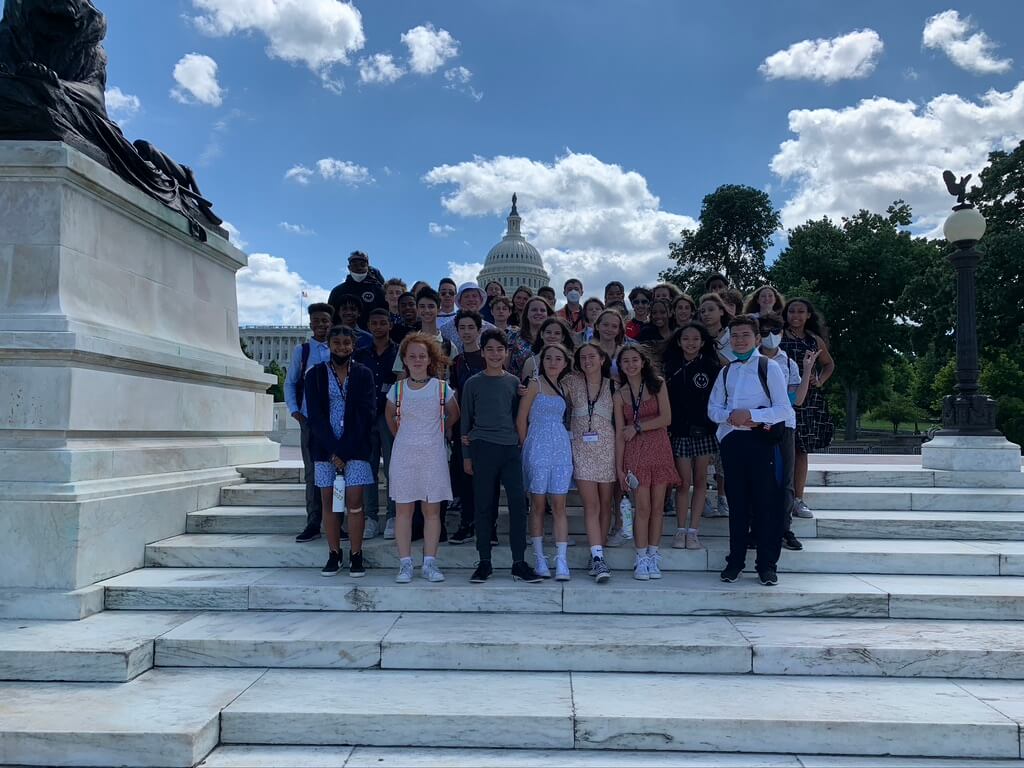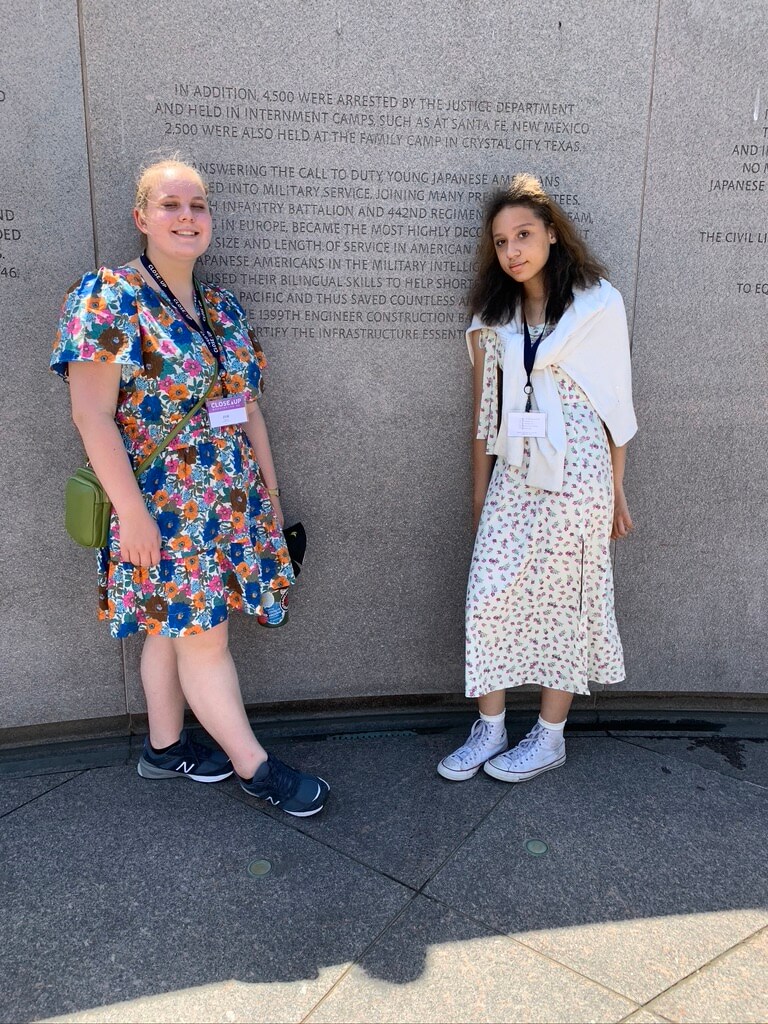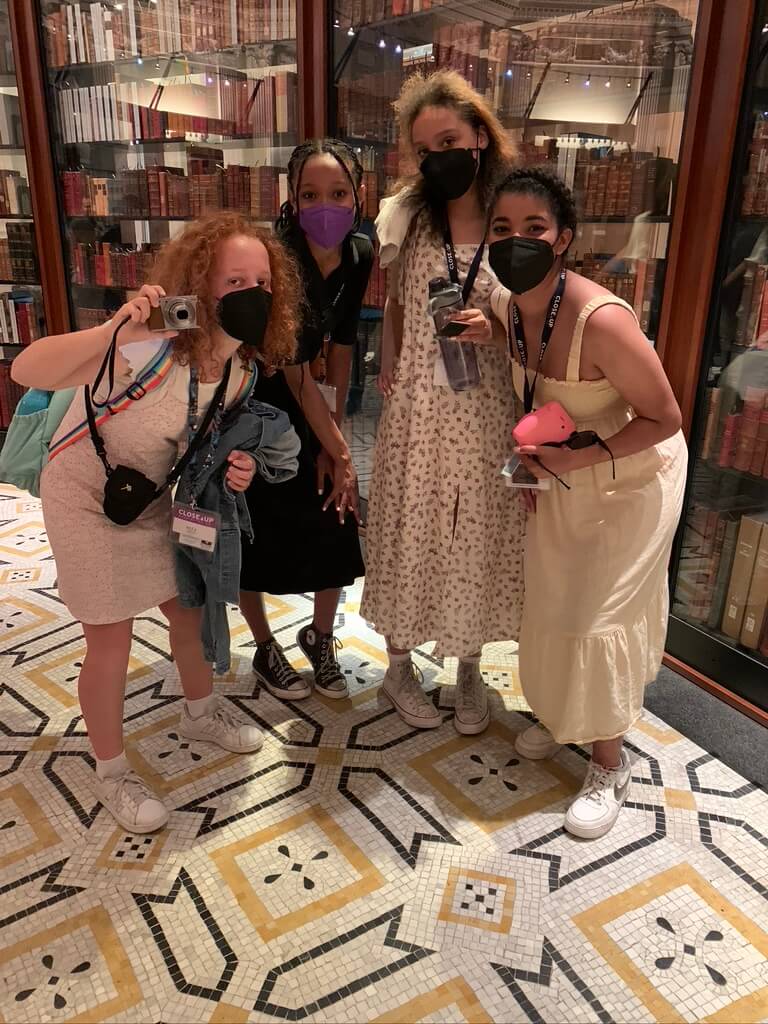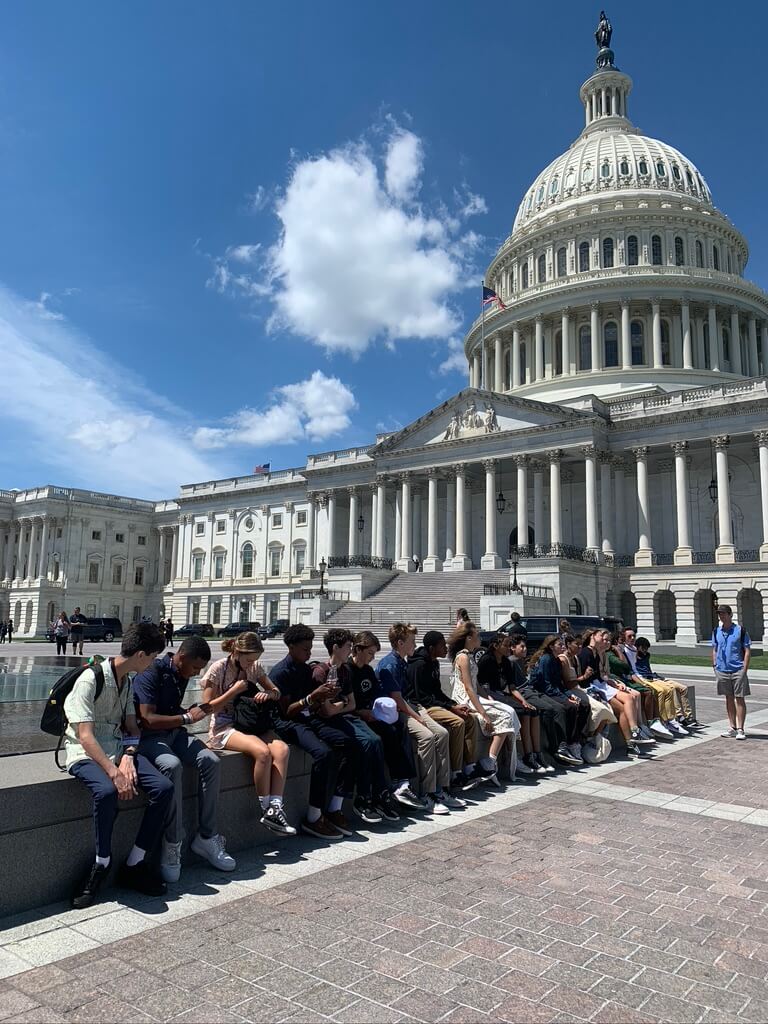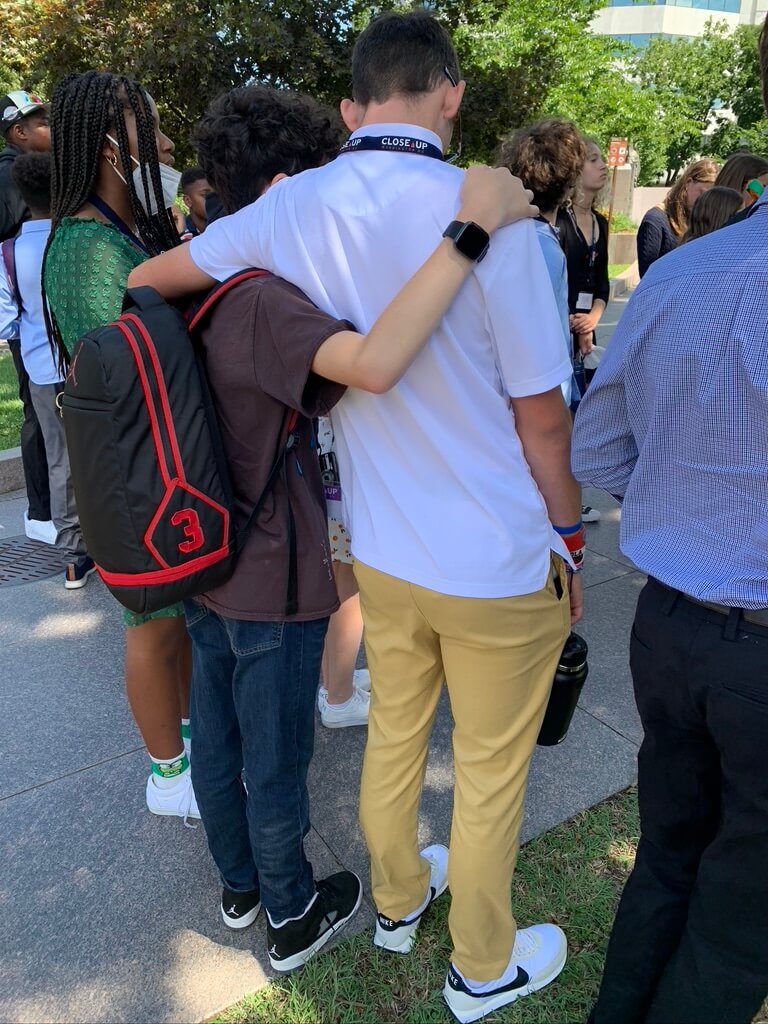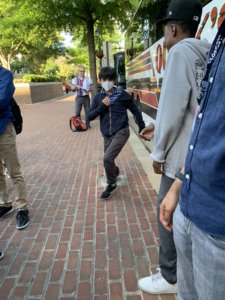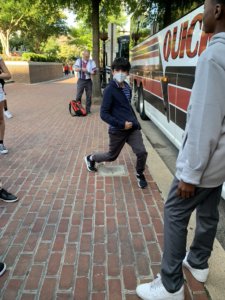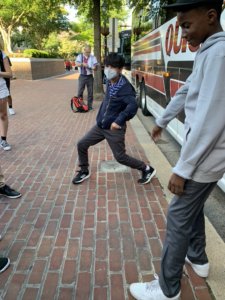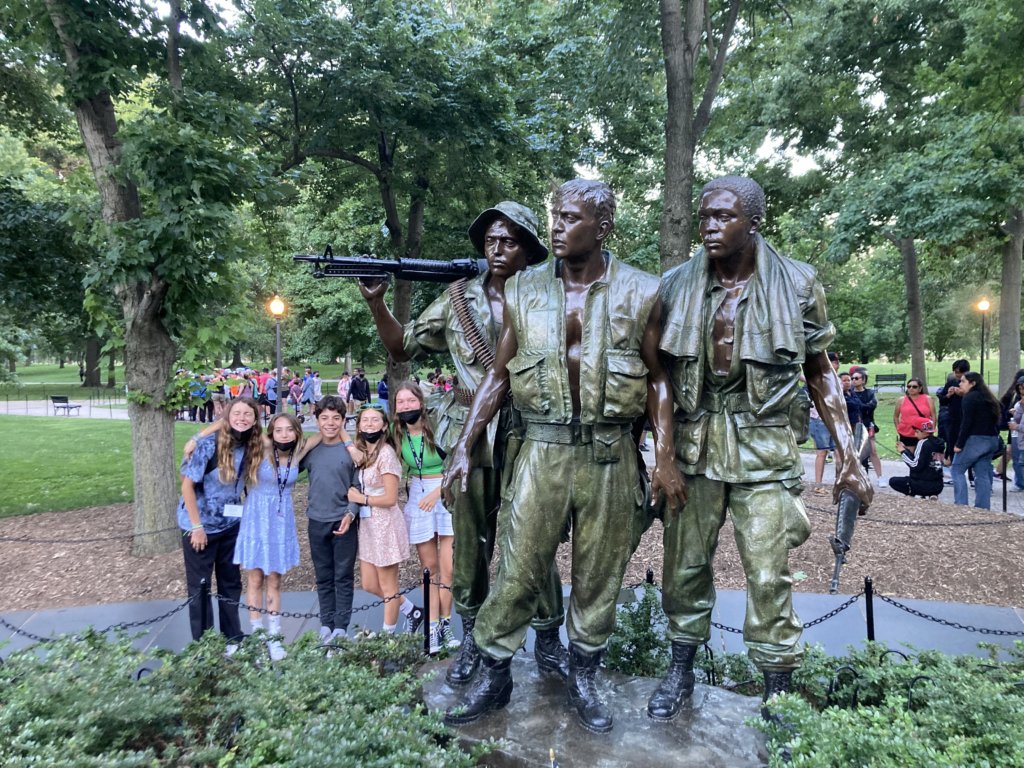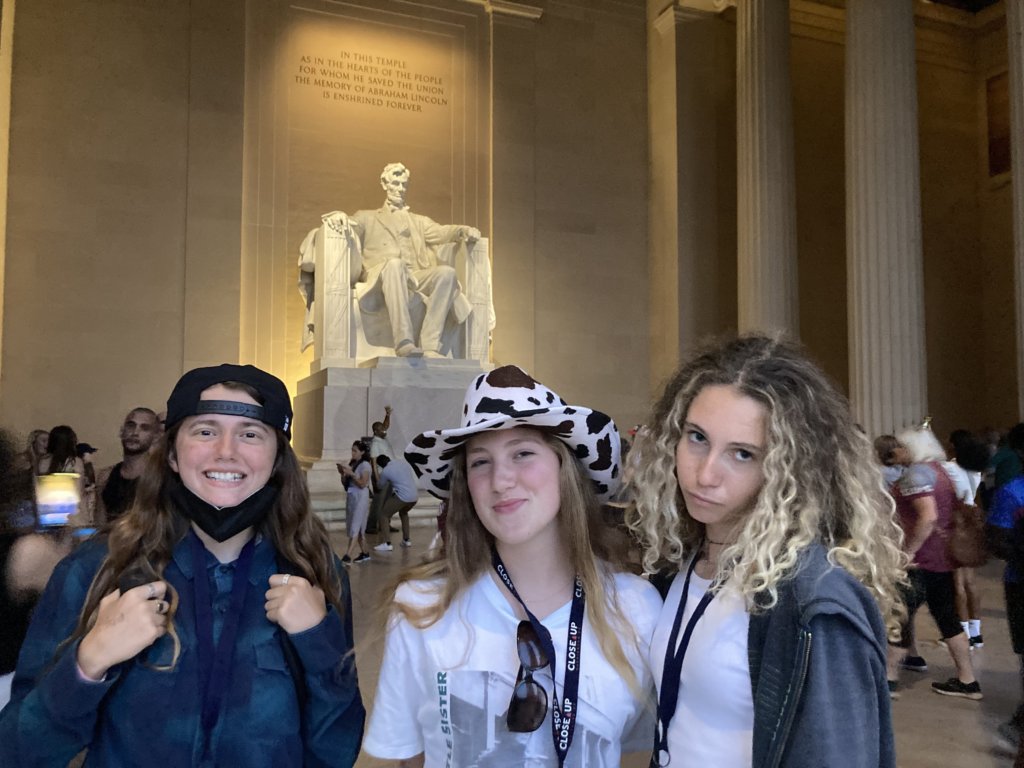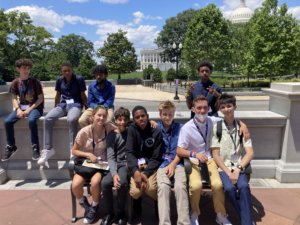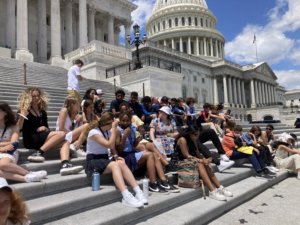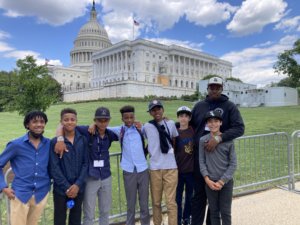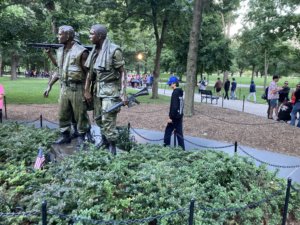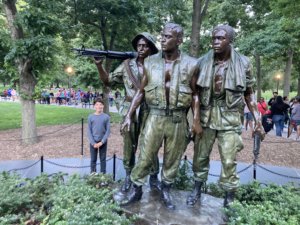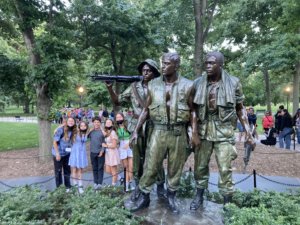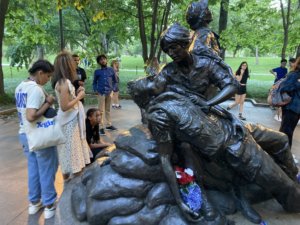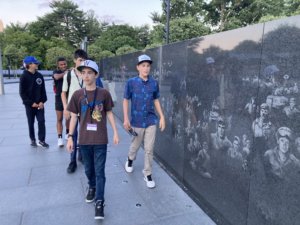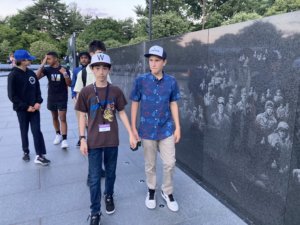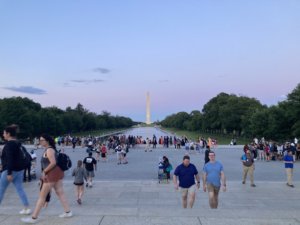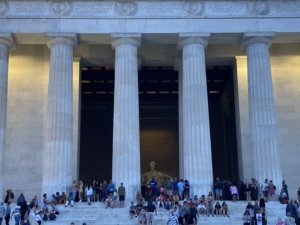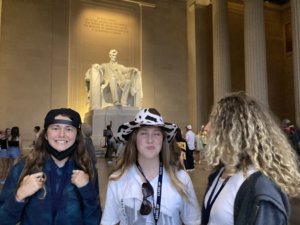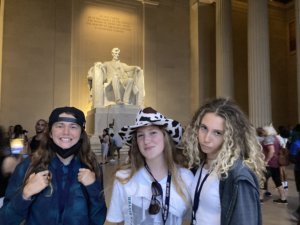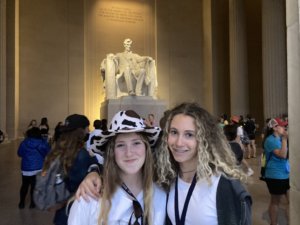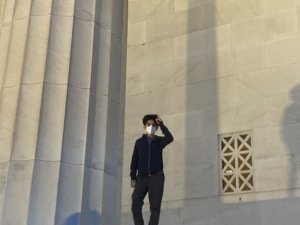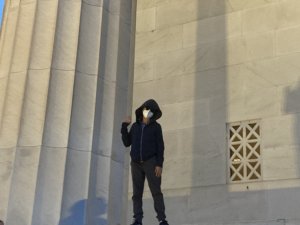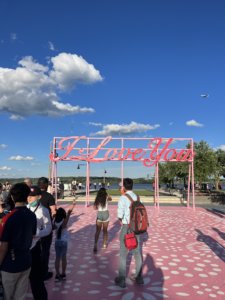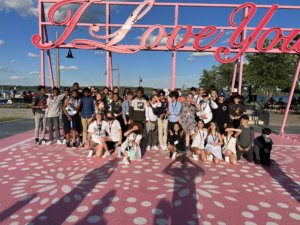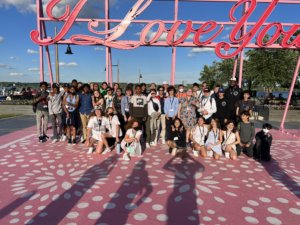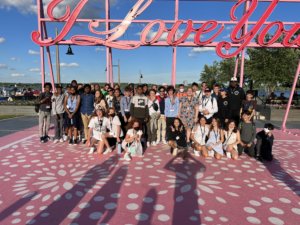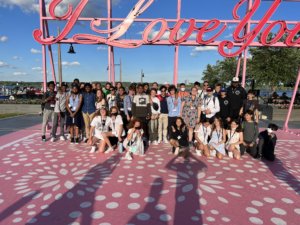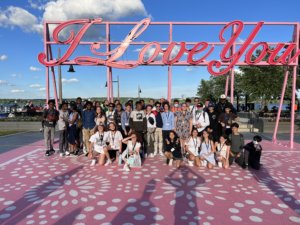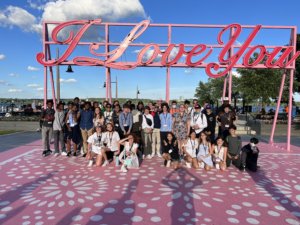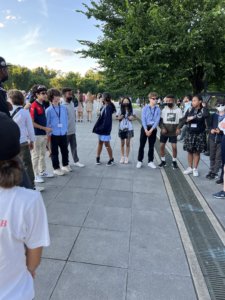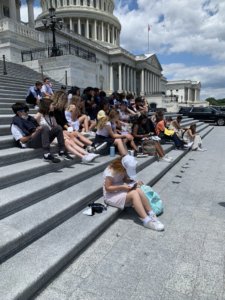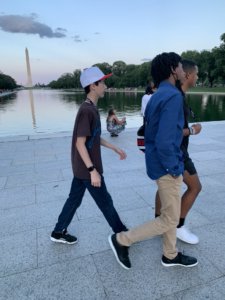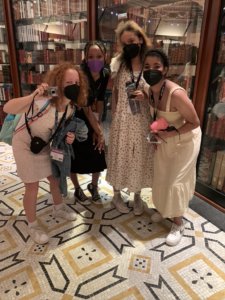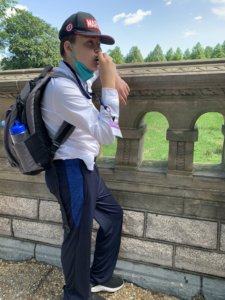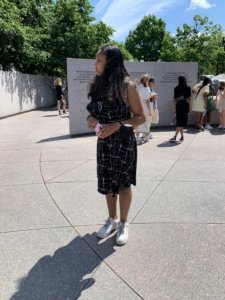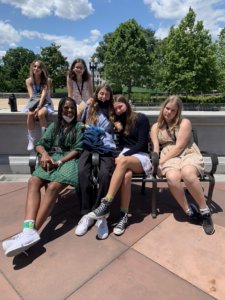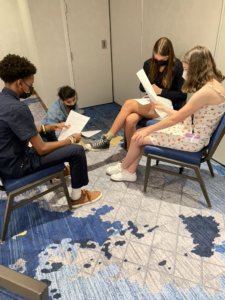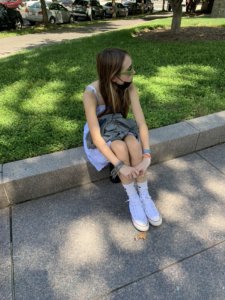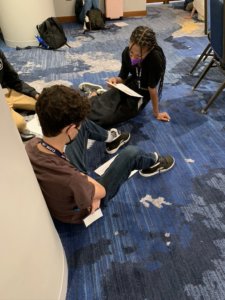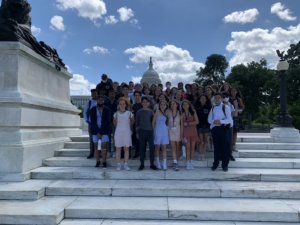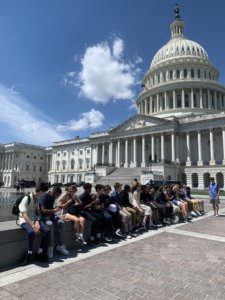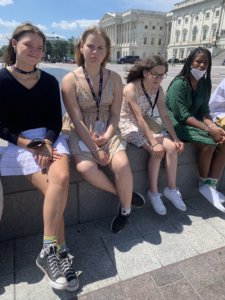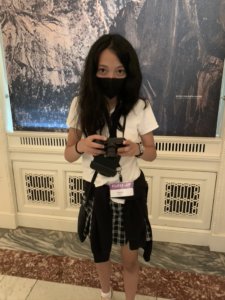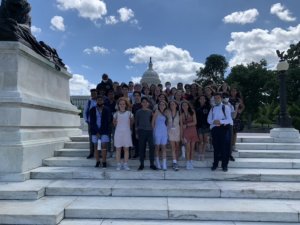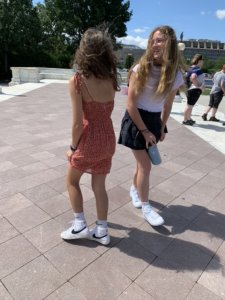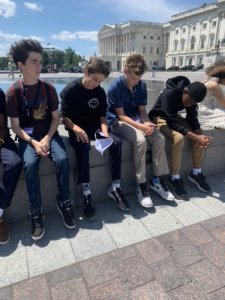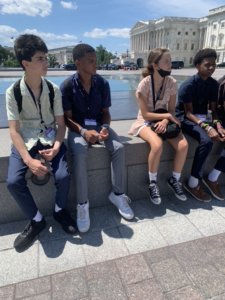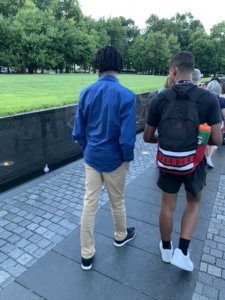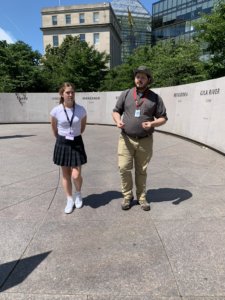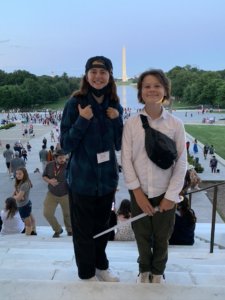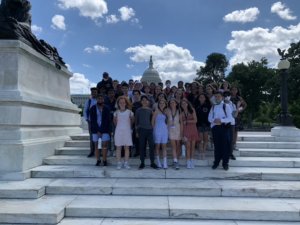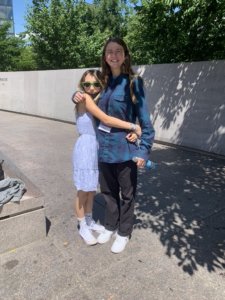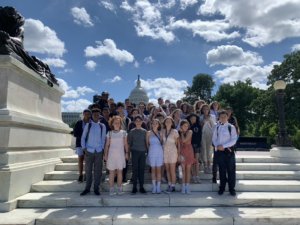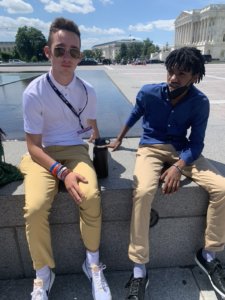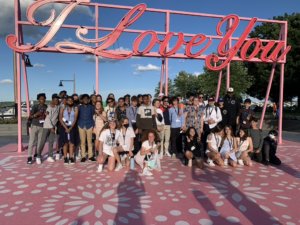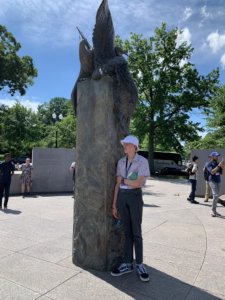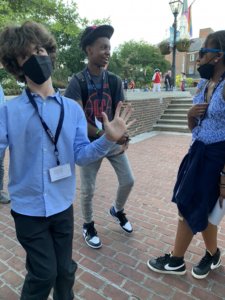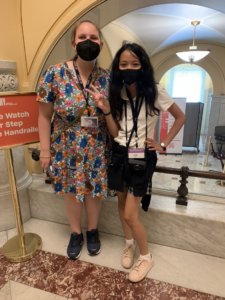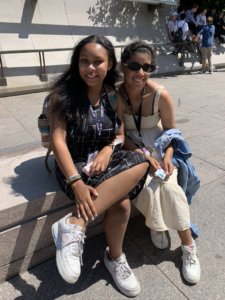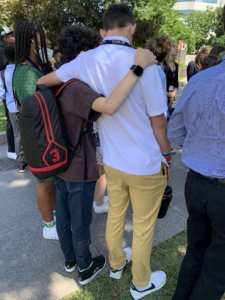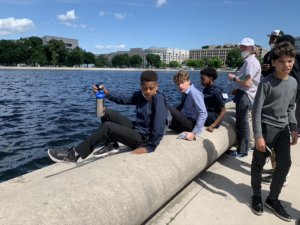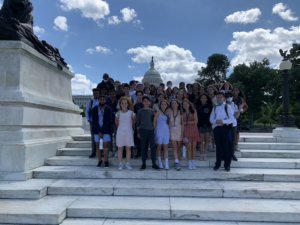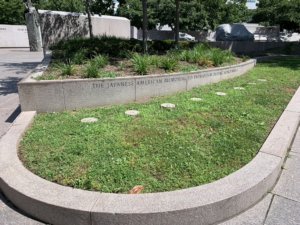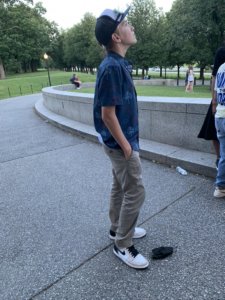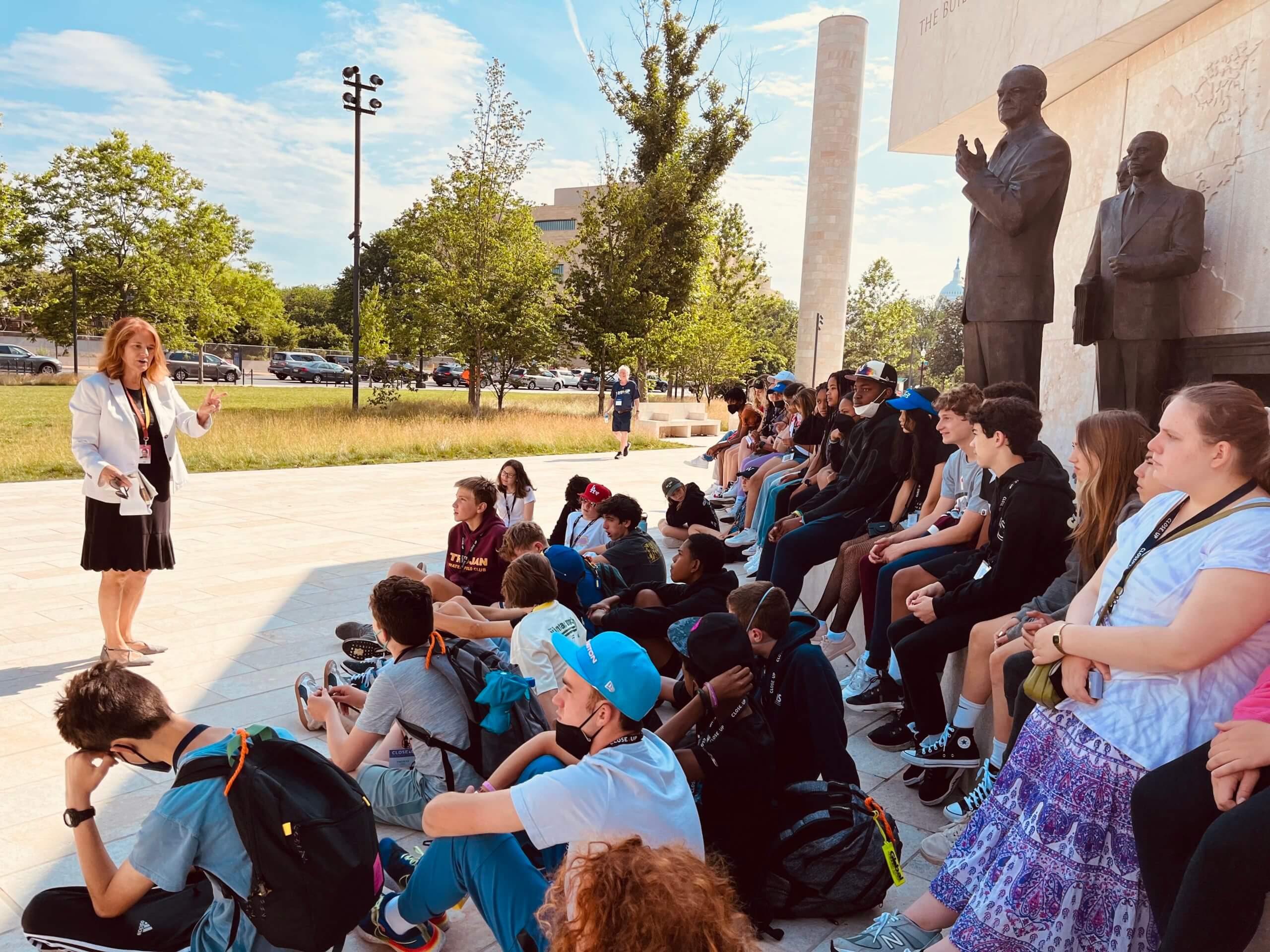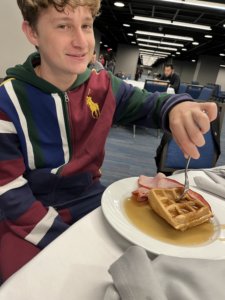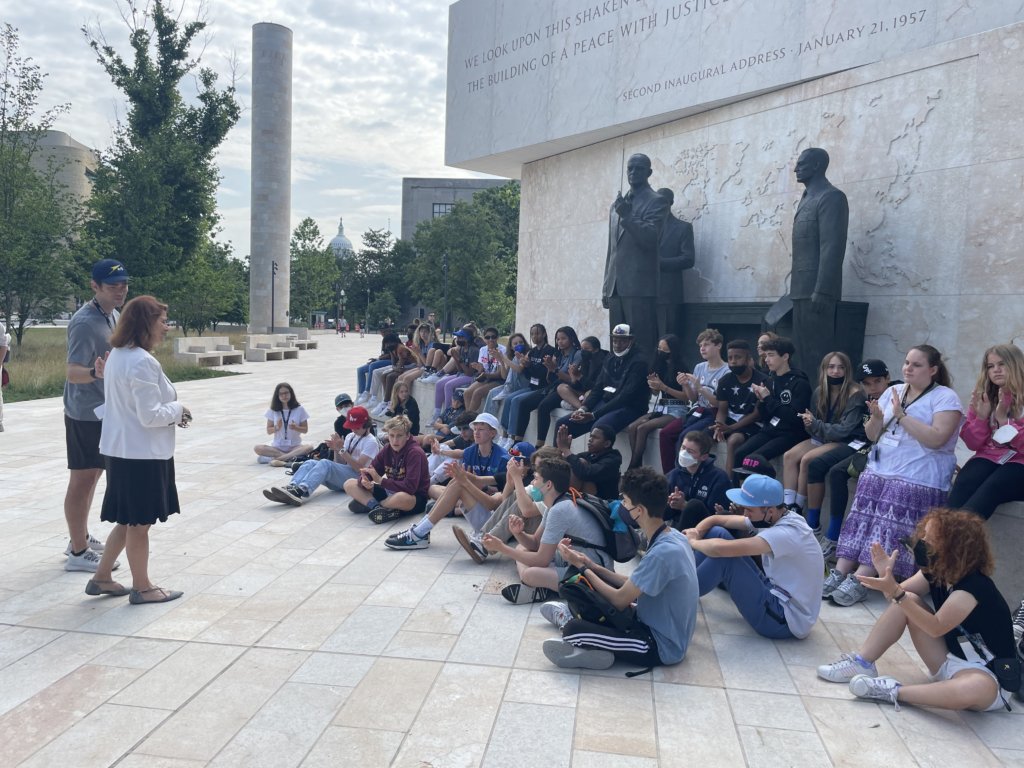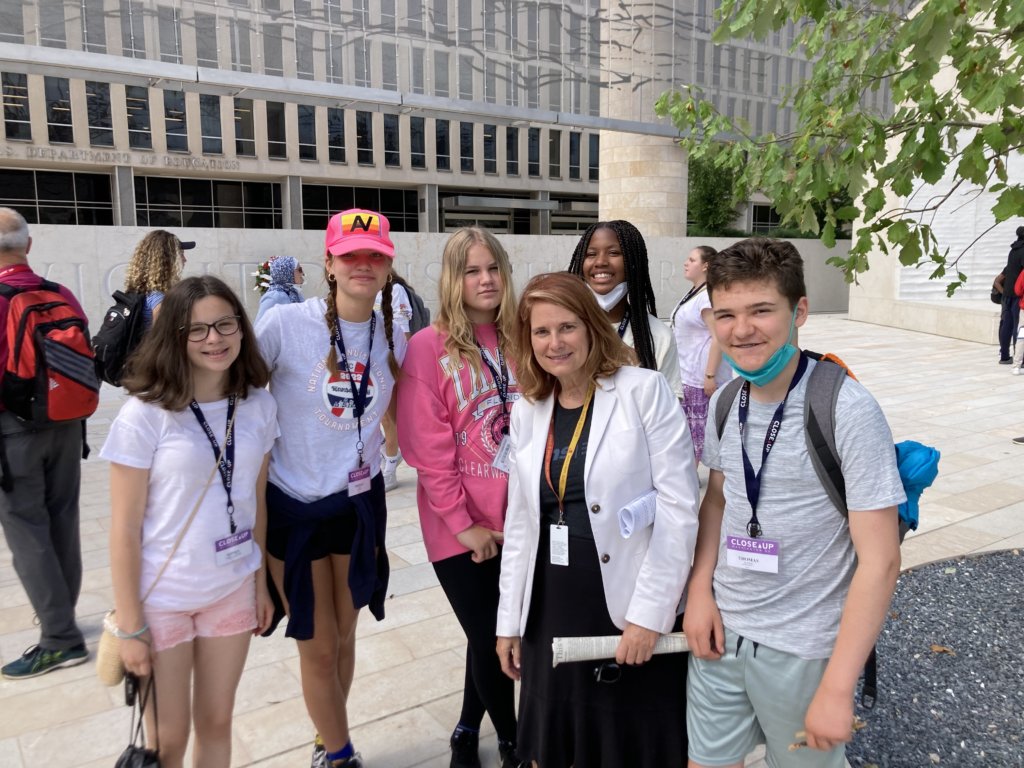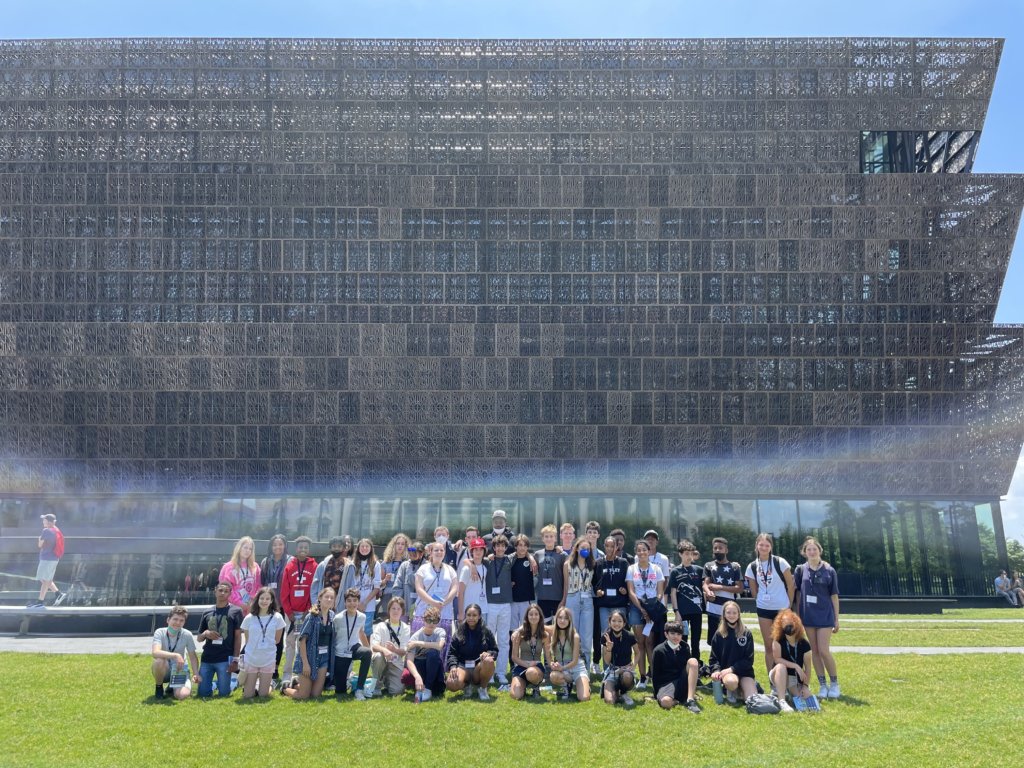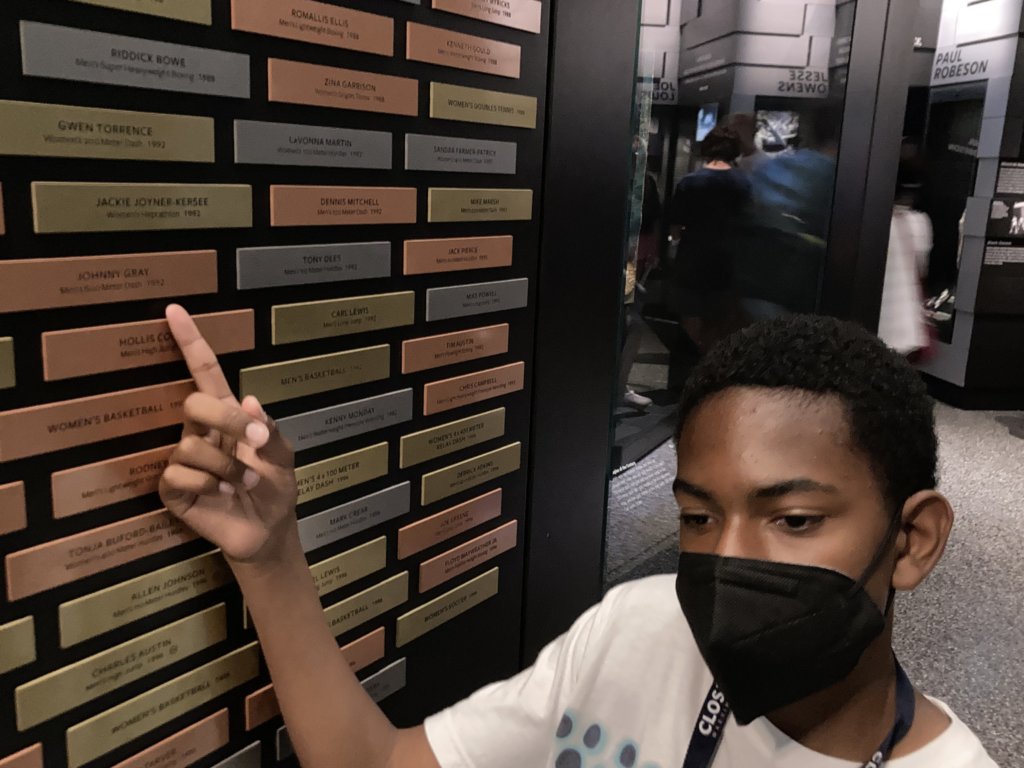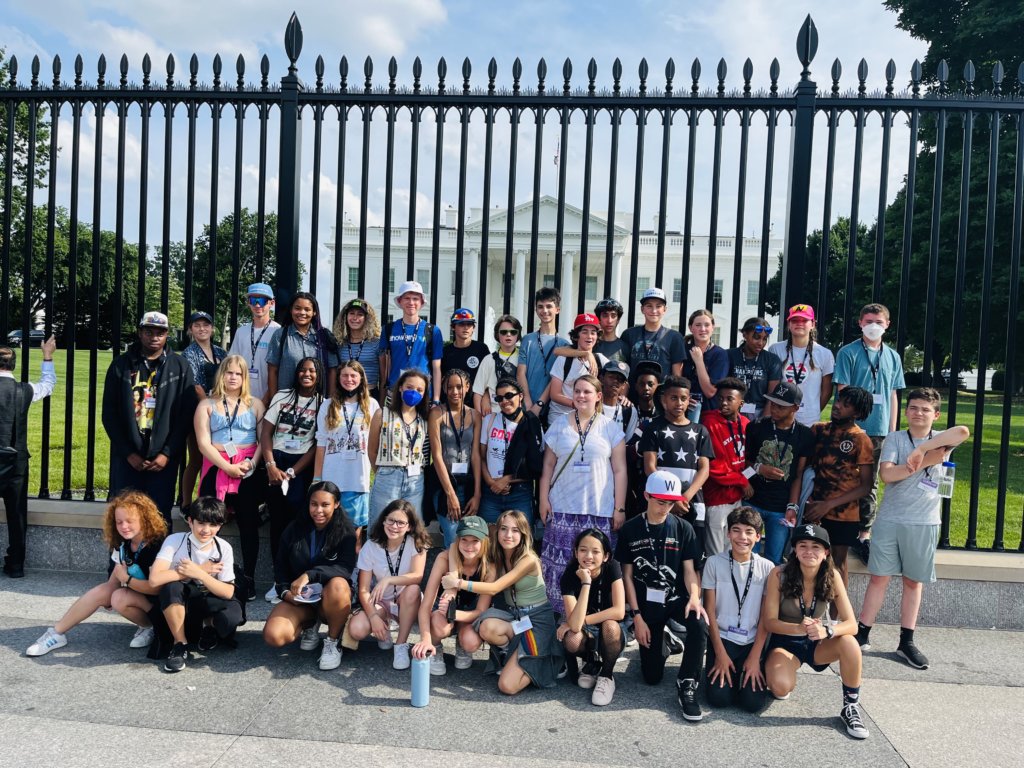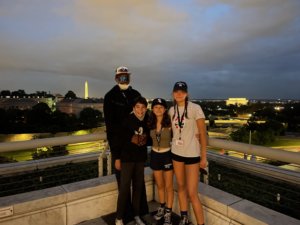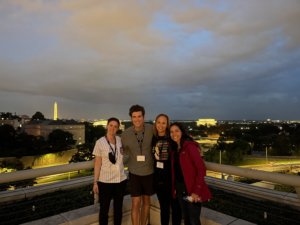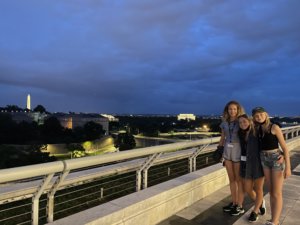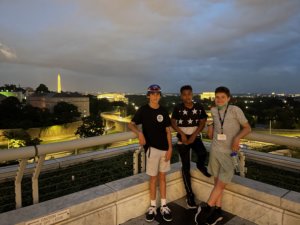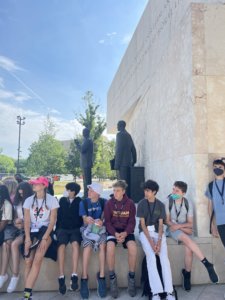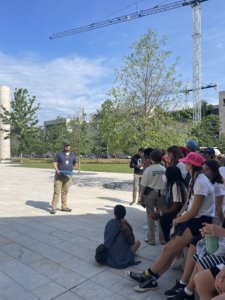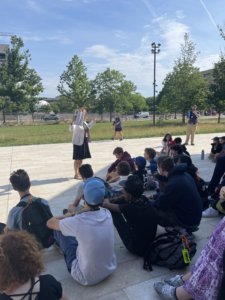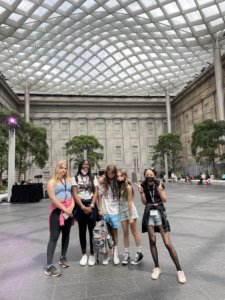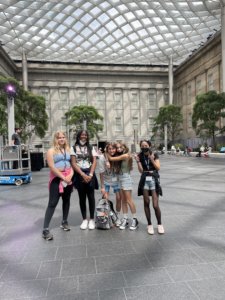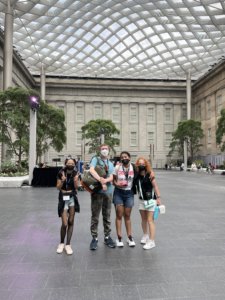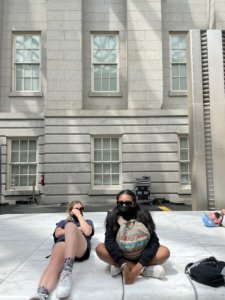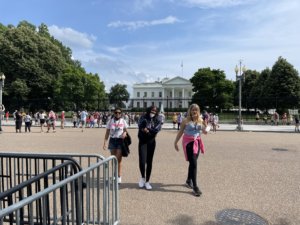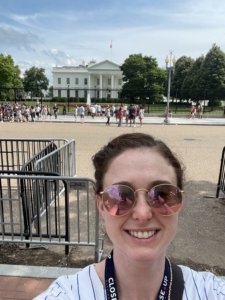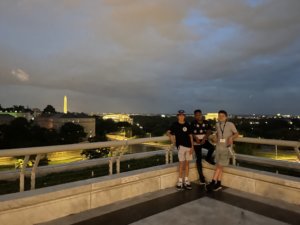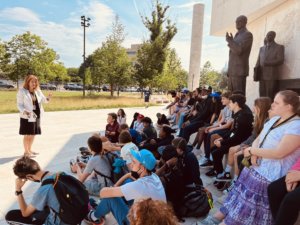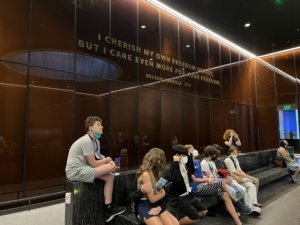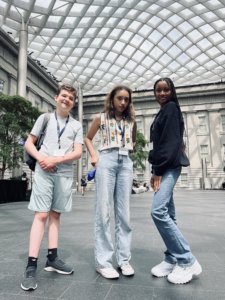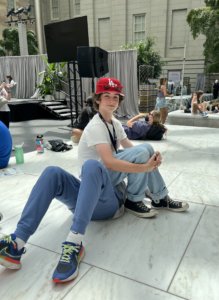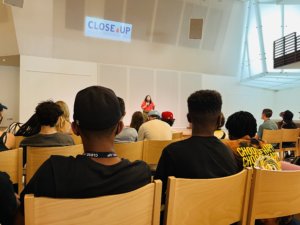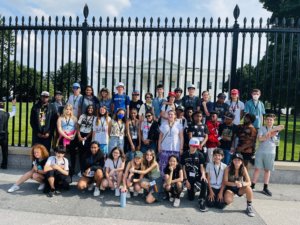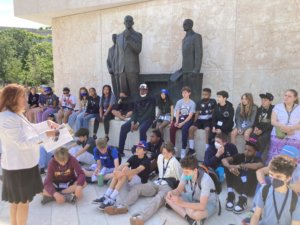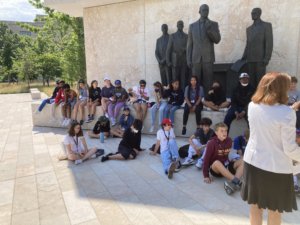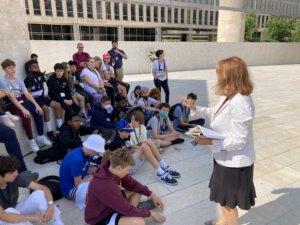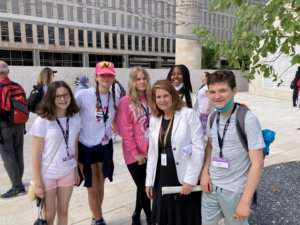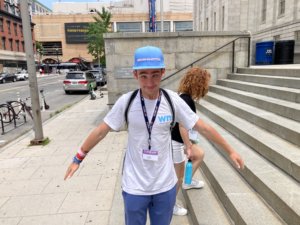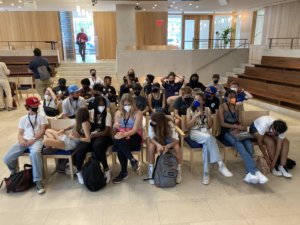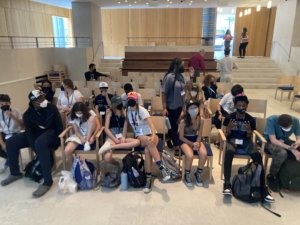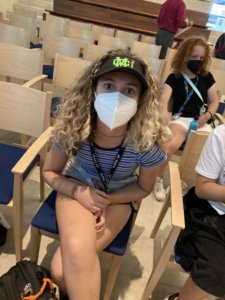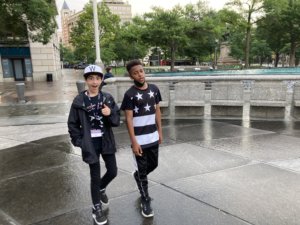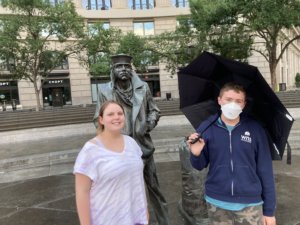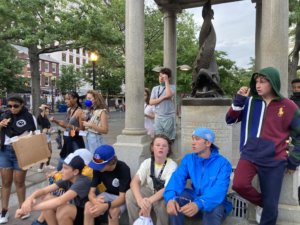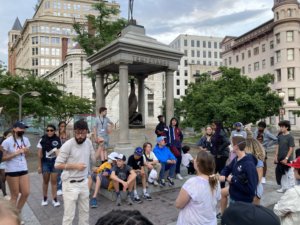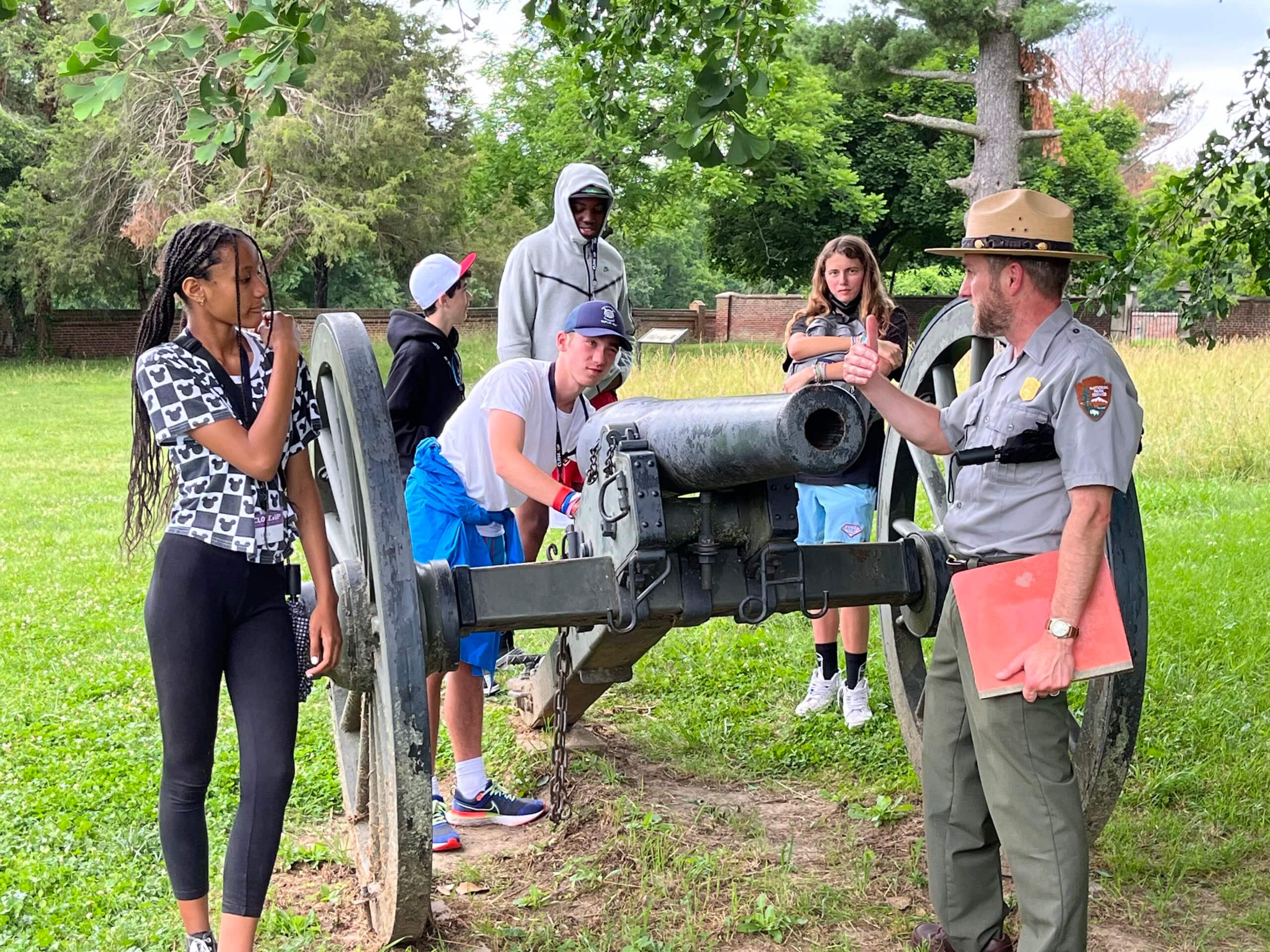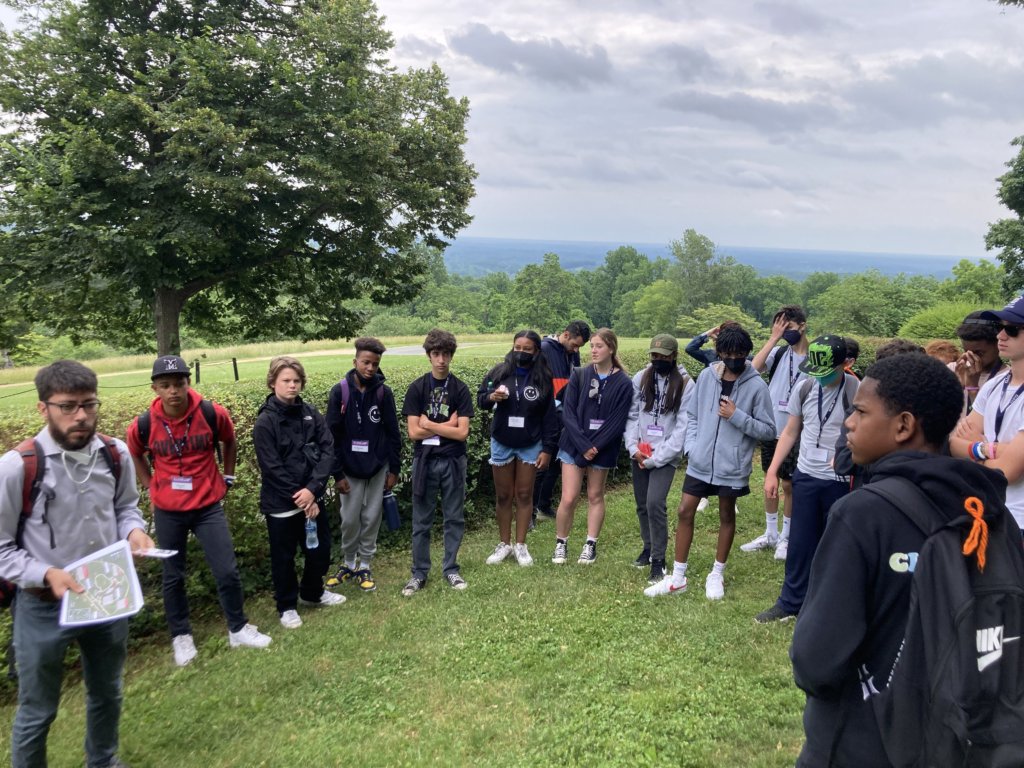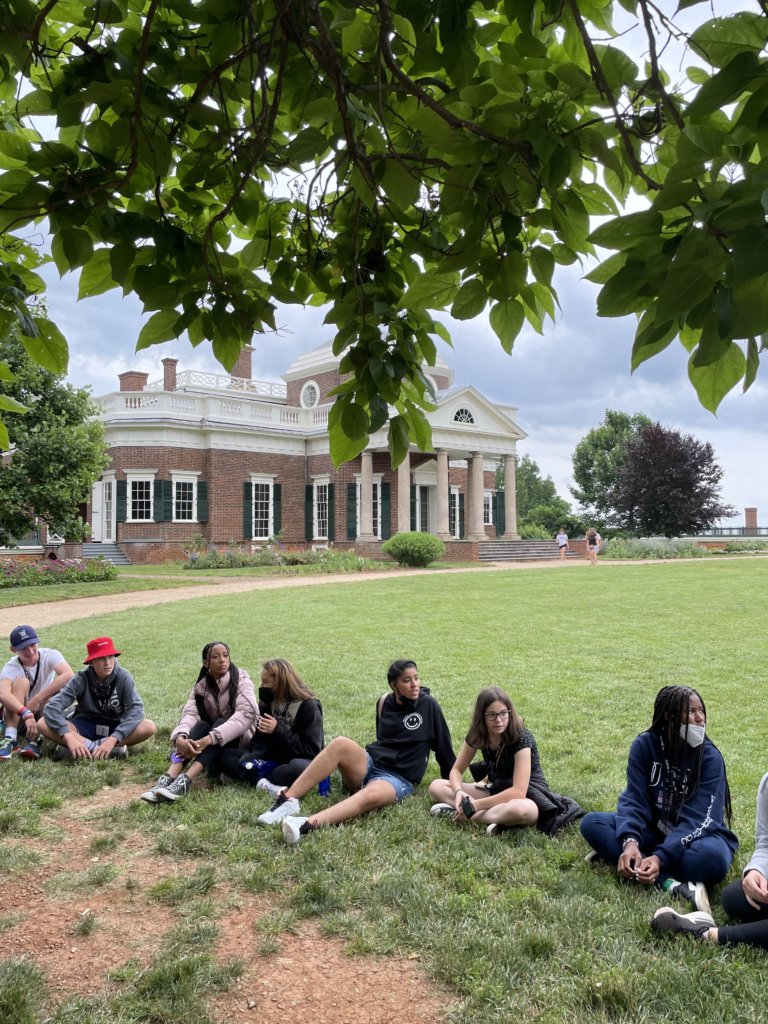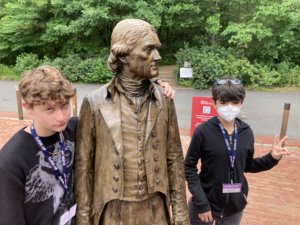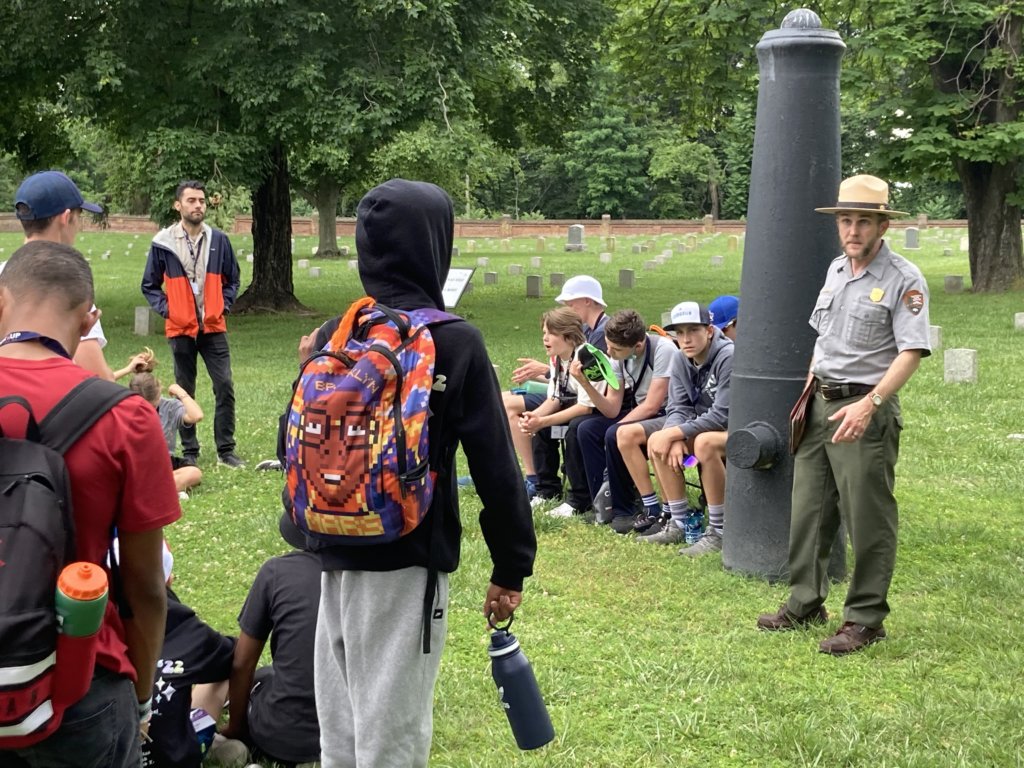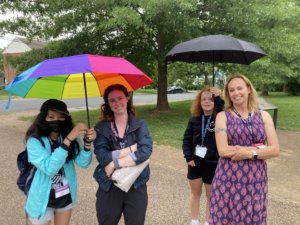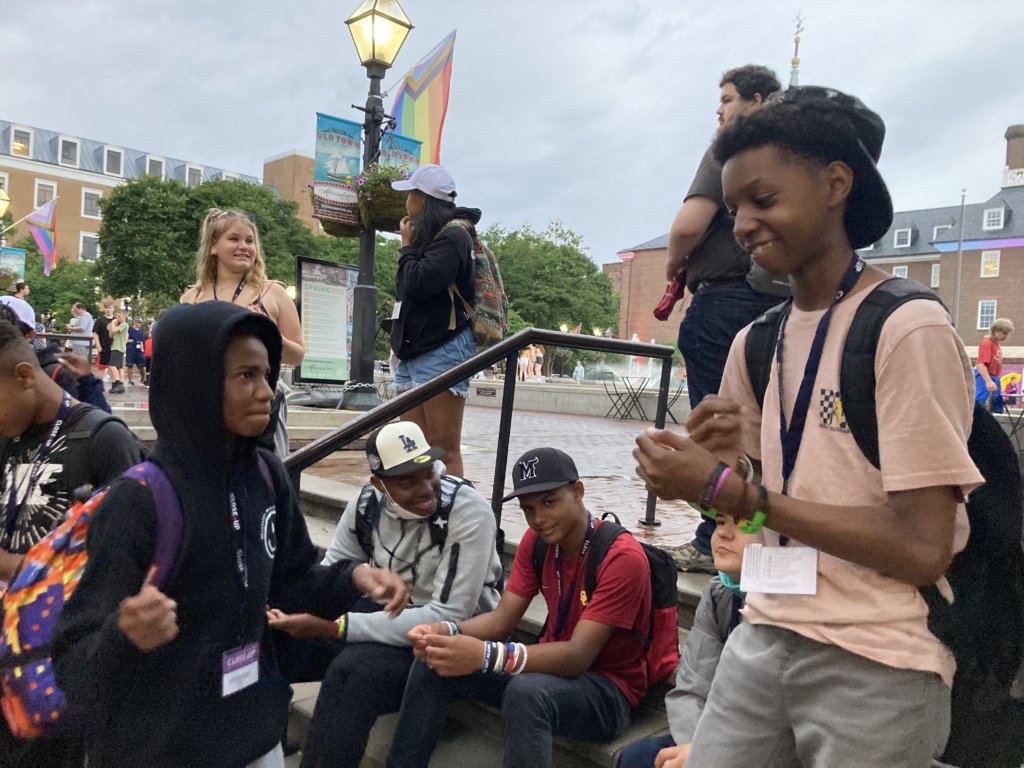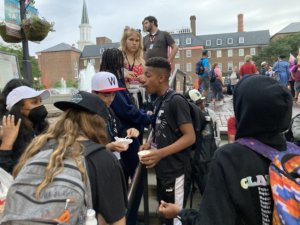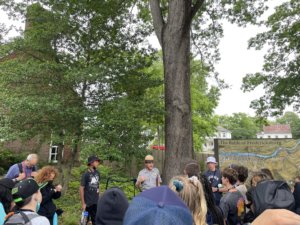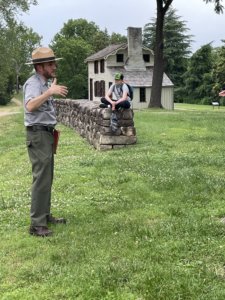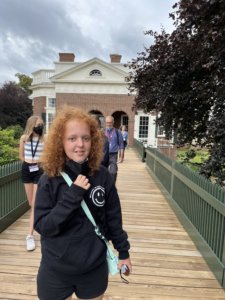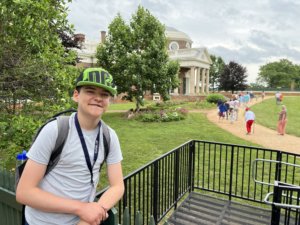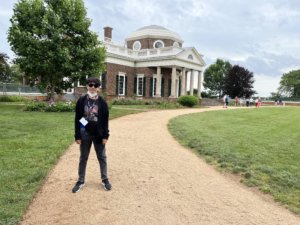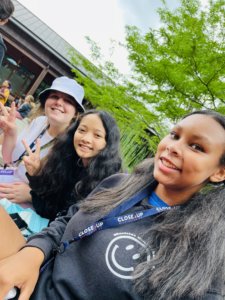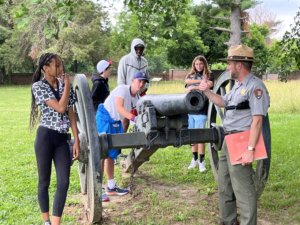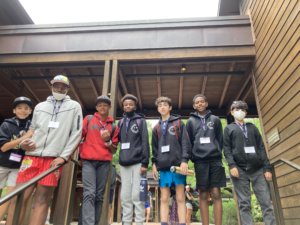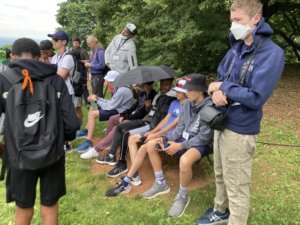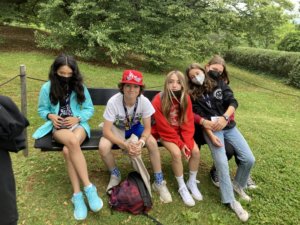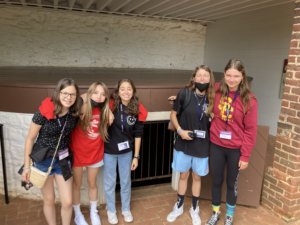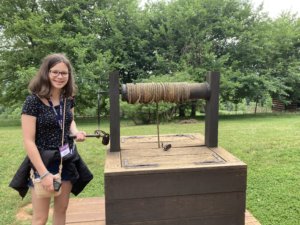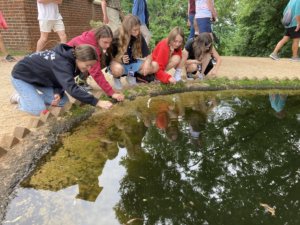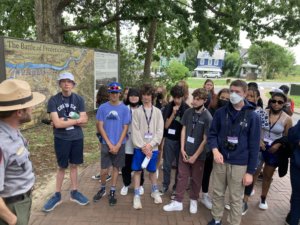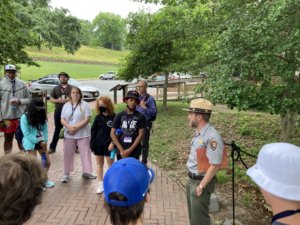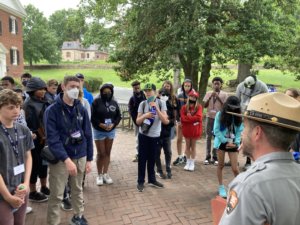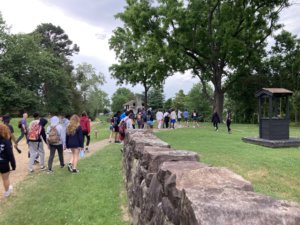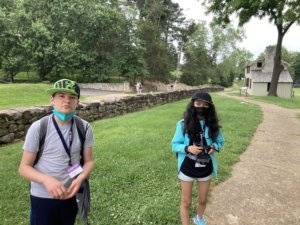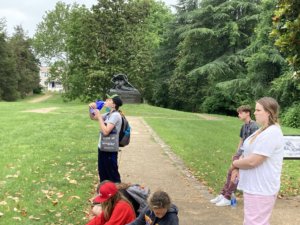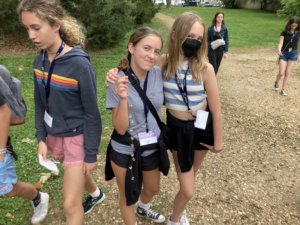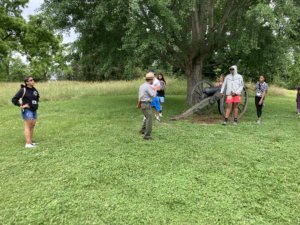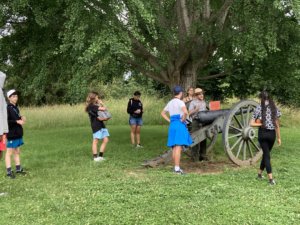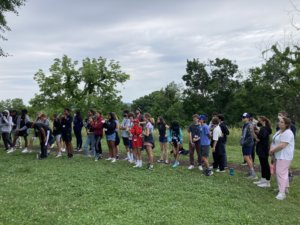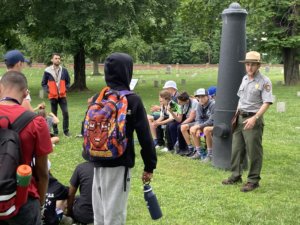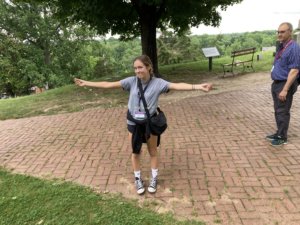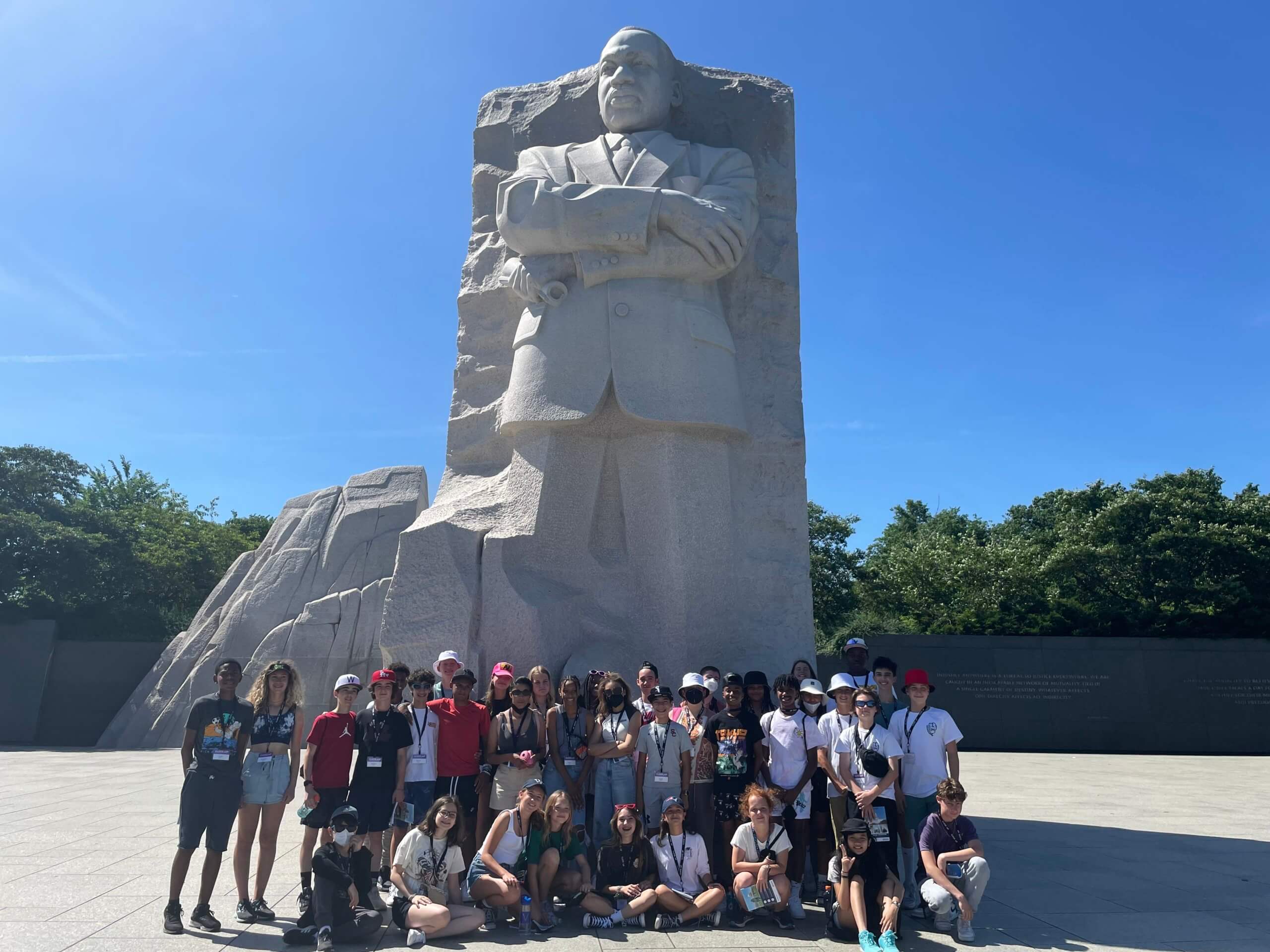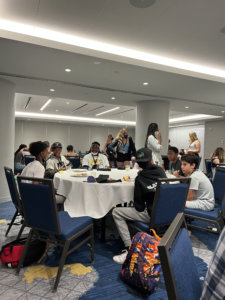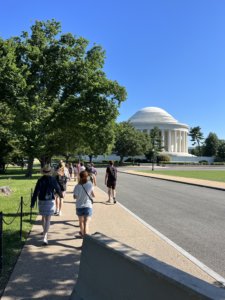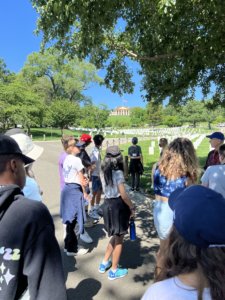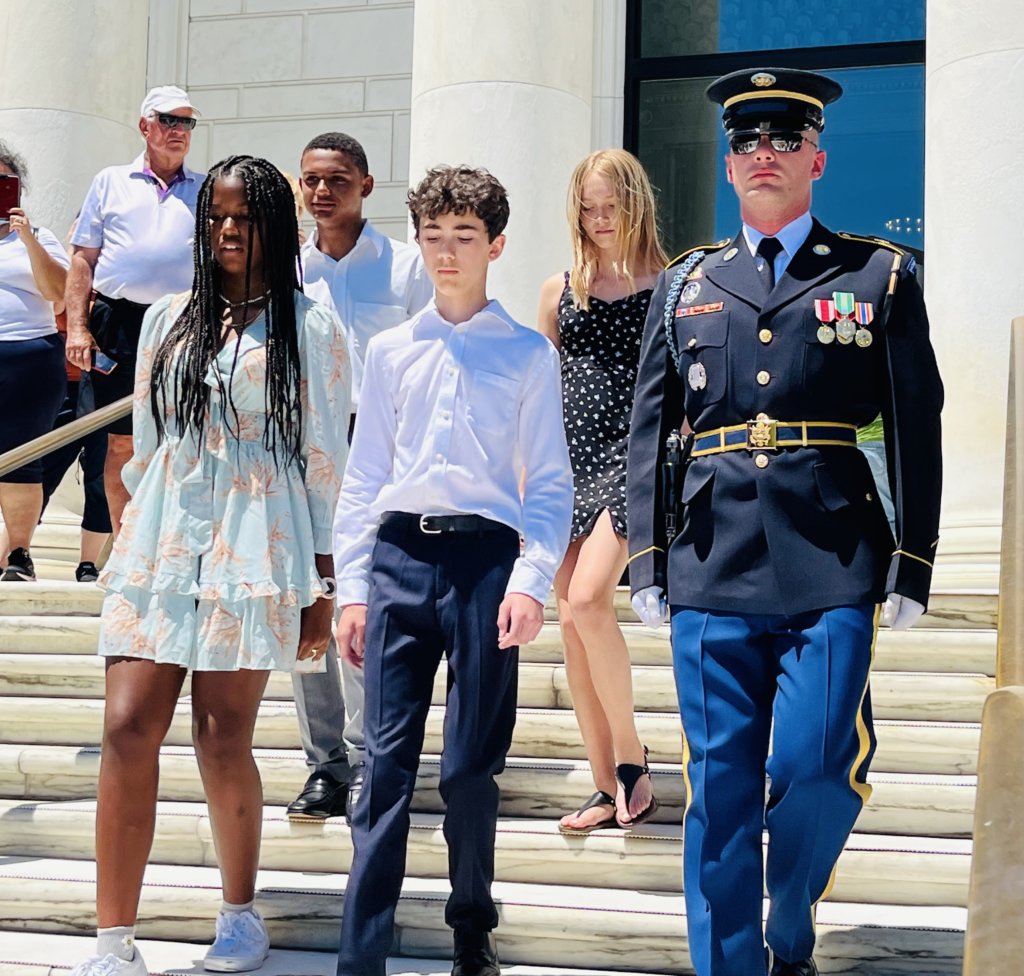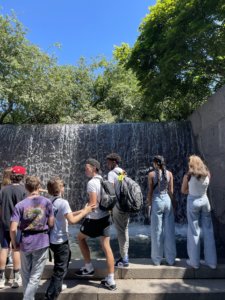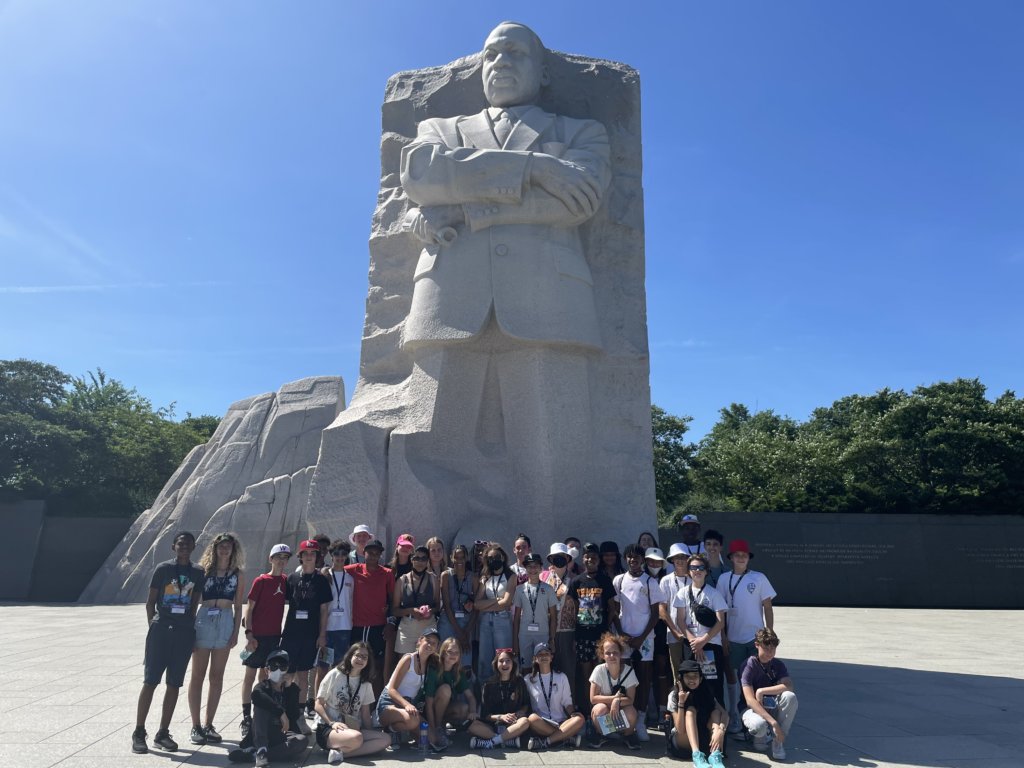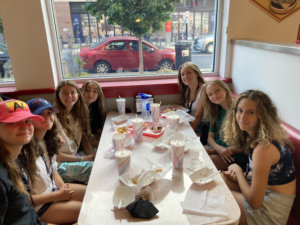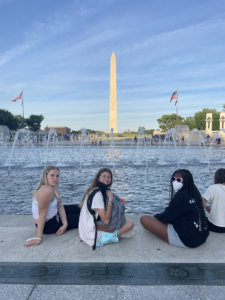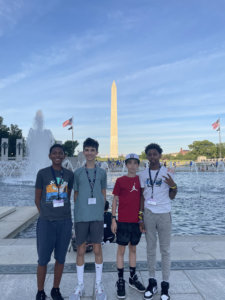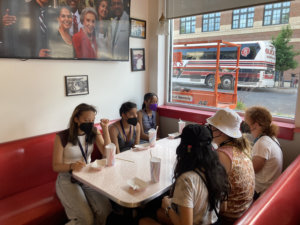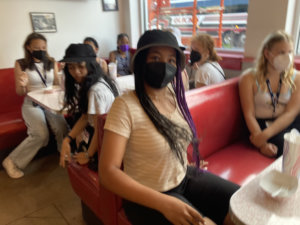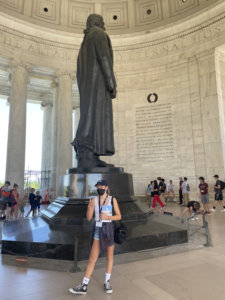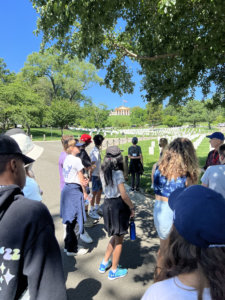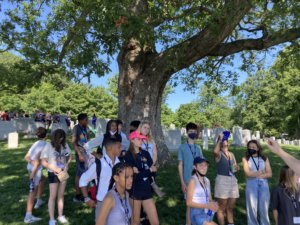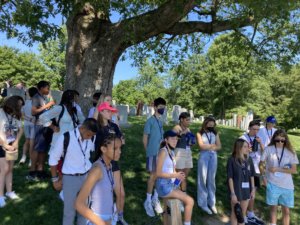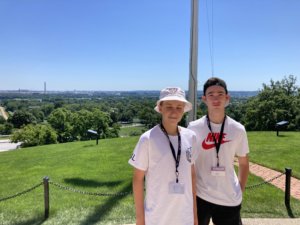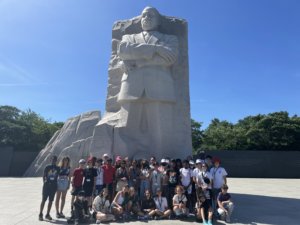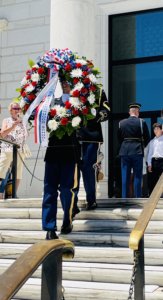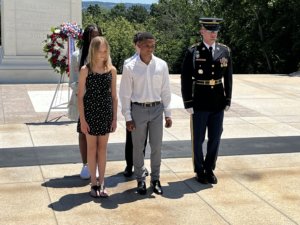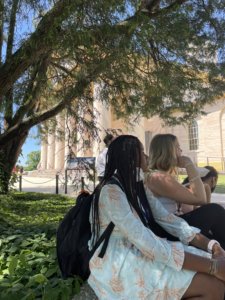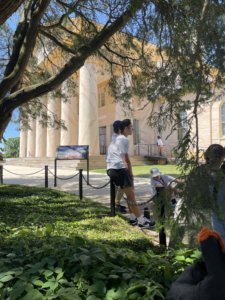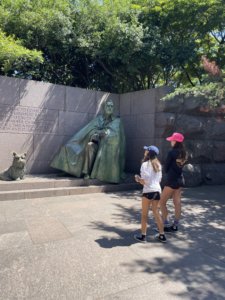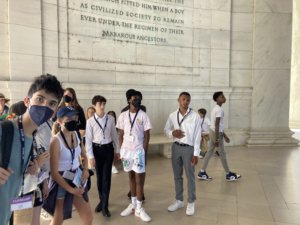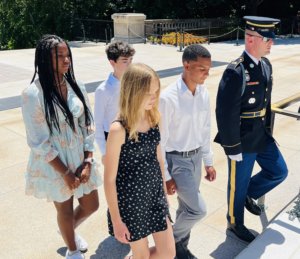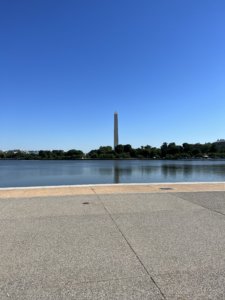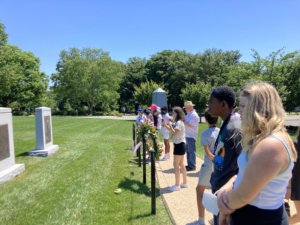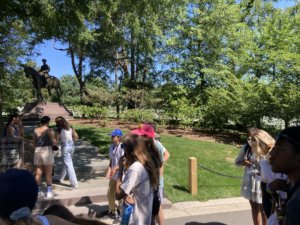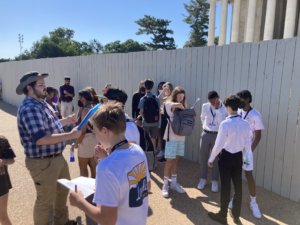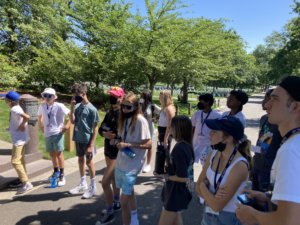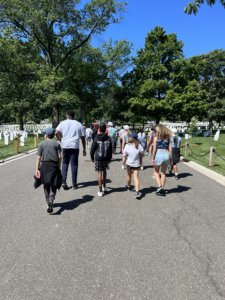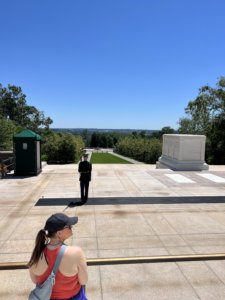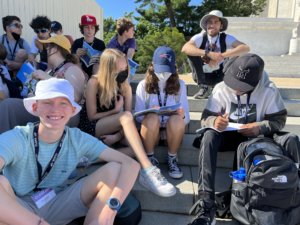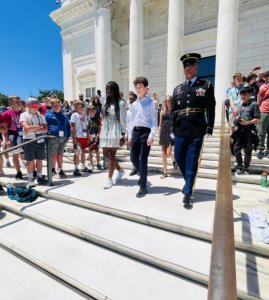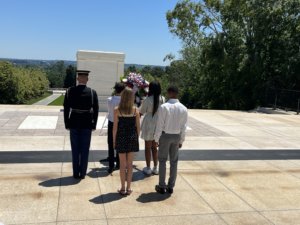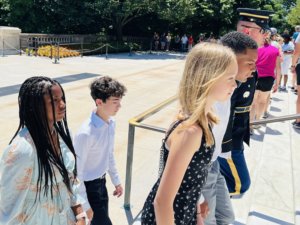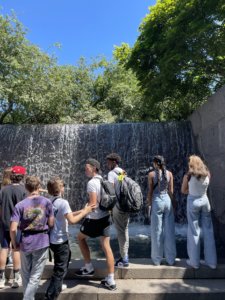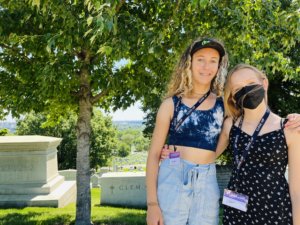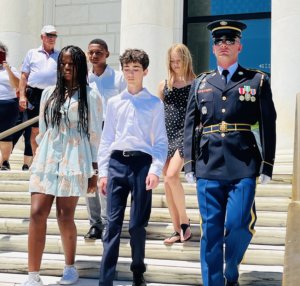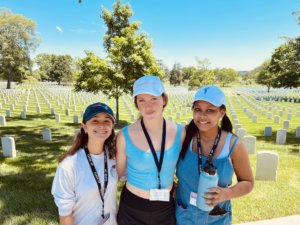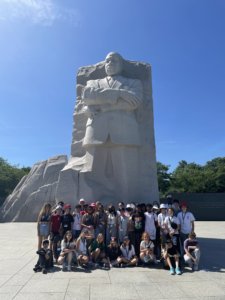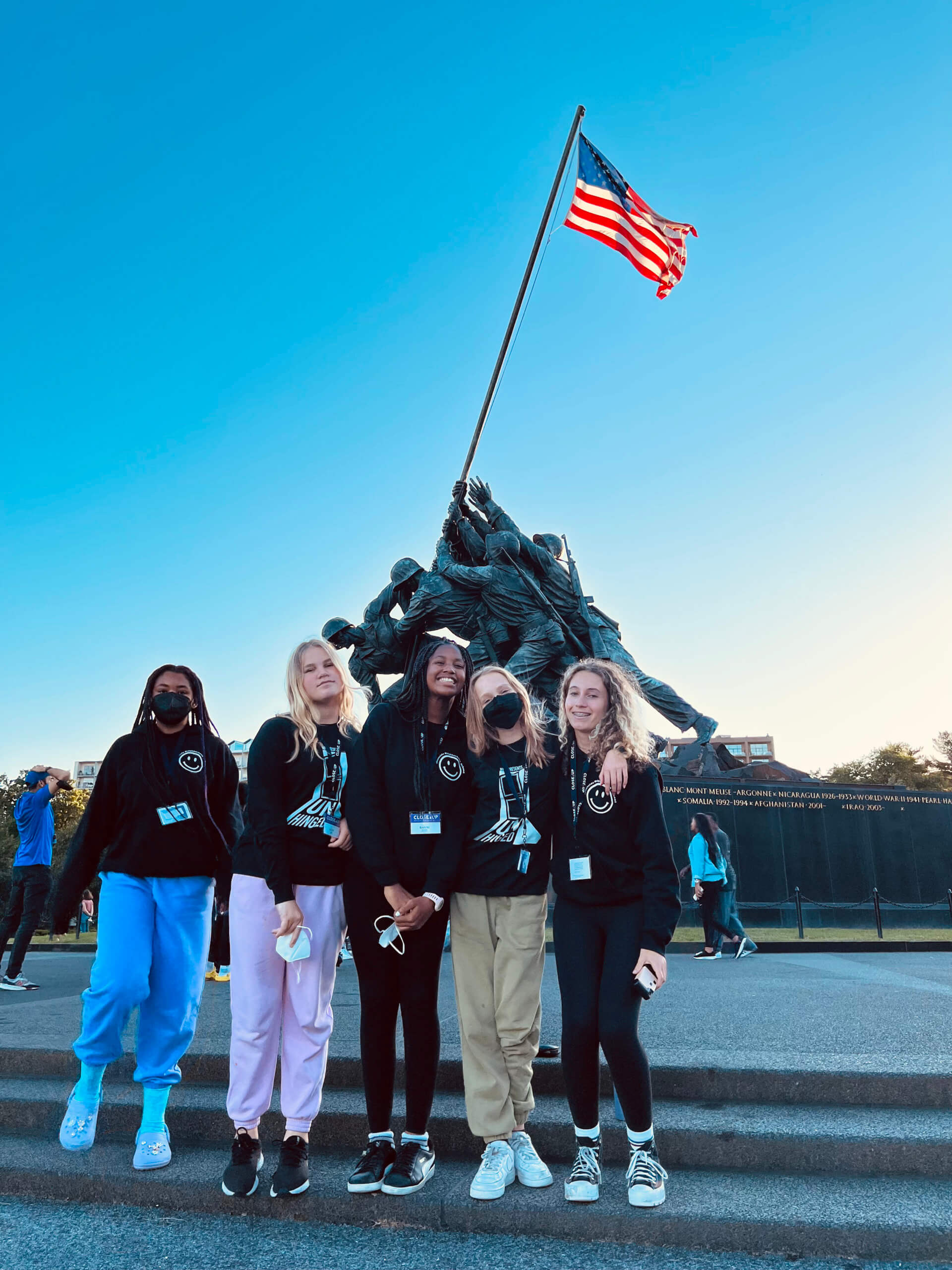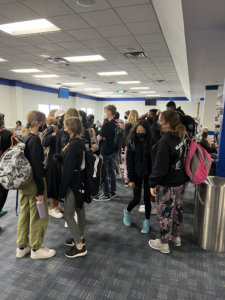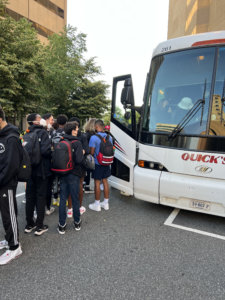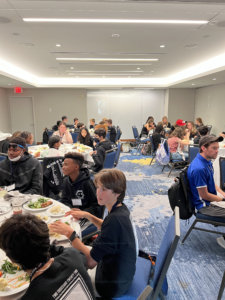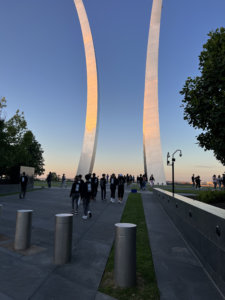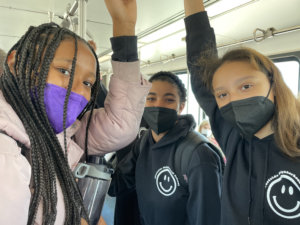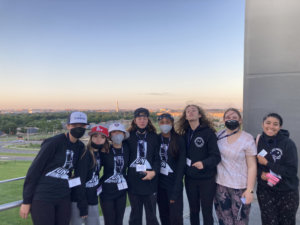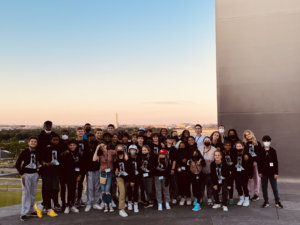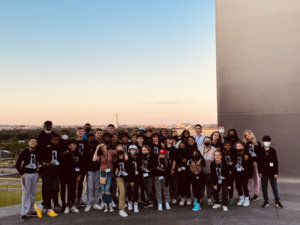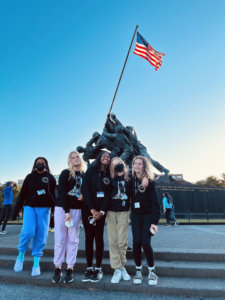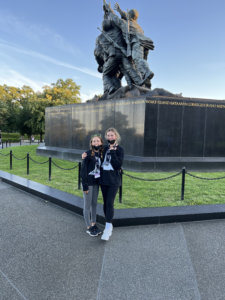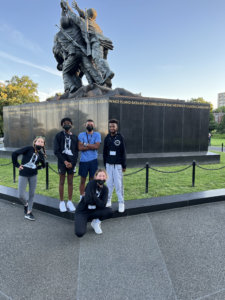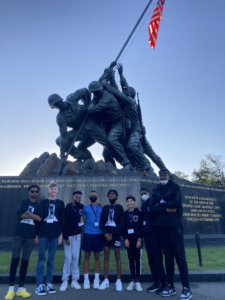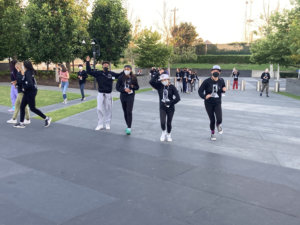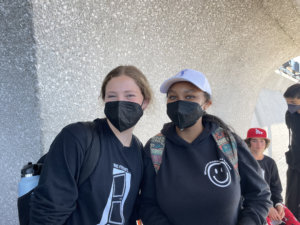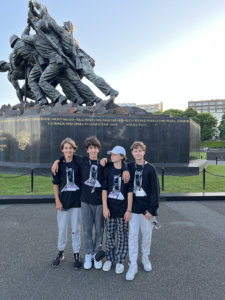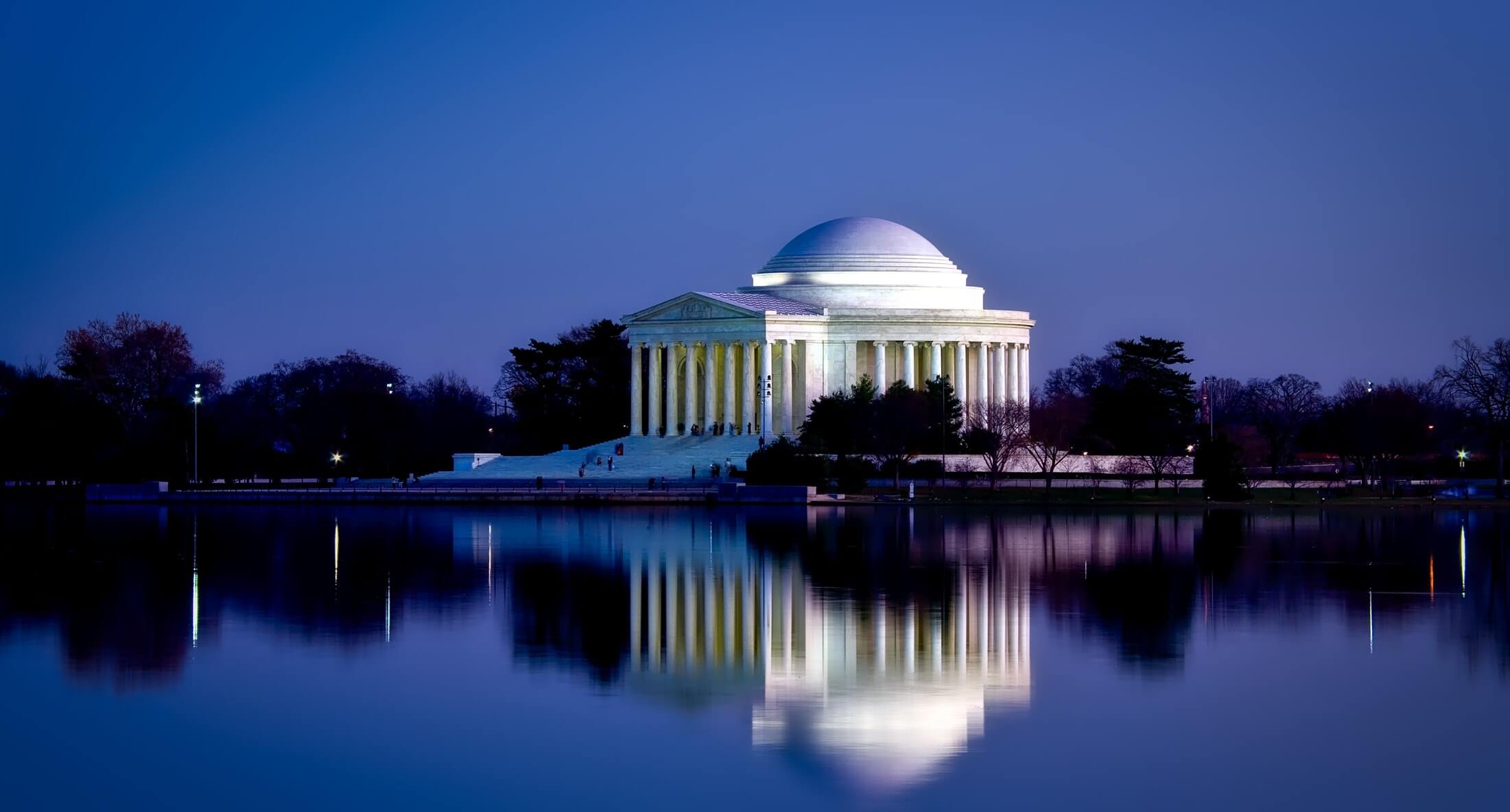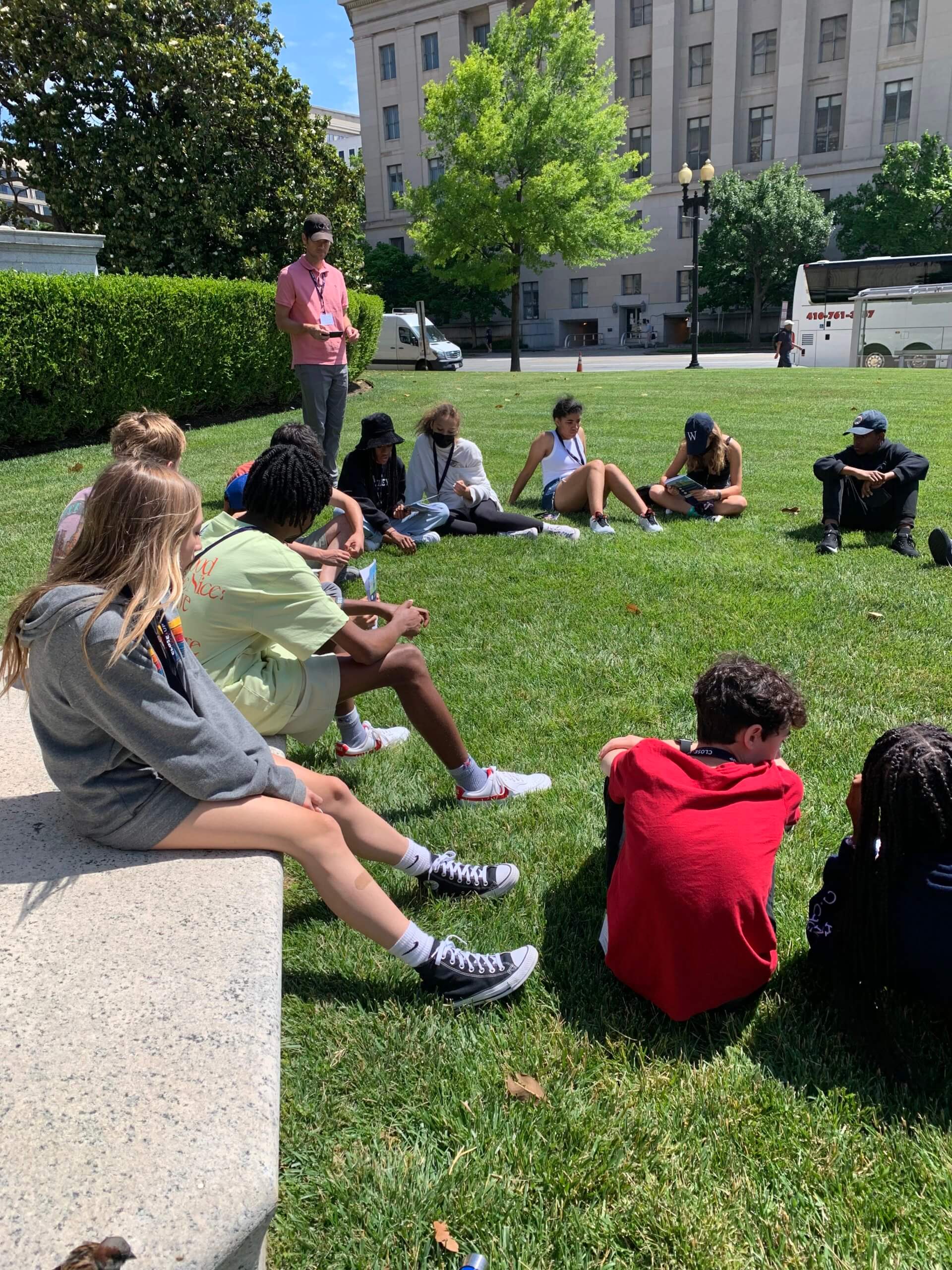
Washington D.C. 2022
Day 6
Somehow, over the course of the week, a majority of rooms unlearned how to set their hotel alarm clocks, and half of the rooms the chaperones knocked on in the morning did not appear to have packed their bags last night. Mr Brannan considered tossing bags of confectionaries into each room after witnessing the hypnotic rush they induced in your kids last night to give them a kick start, but then he remembered he’d be on a bus with them again in an hour and half. Not worth it! The repetition of good, old-fashioned encouraging ‘lets-get-a-move-ons’ would have to suffice.
We had breakfast before final room checks. Whether it was the ample availability of syrup and waffles or the prospect of getting back home, there didn’t seem to be a sad kid in the whole bunch, at least not yet.
Just before 9am, the final room checks commenced. For the most part, the boys’ rooms were surprisingly tidy, but there were a few rooms that had been funkified, and not in the DC go-go music kind of way but in the overcompensating with Axe-spray instead of showering kind of way. If the girls’ rooms were untidy or smelly, they did a good job of straightening things up before Mrs Reimann or Mrs Abo knocked.
Once the rooms were checked, we took our bags to the bus and headed to the Pentagon 9/11 Memorial. The kids wandered the space, with some commenting on the symbolism and thoughtfulness of the design and thinking more deeply about the memorials they created as part of a joint social studies and English project earlier this year.
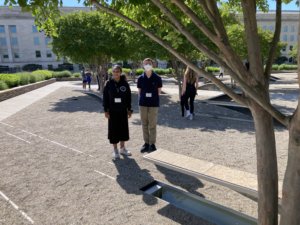
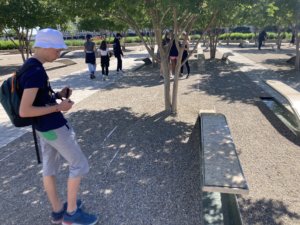
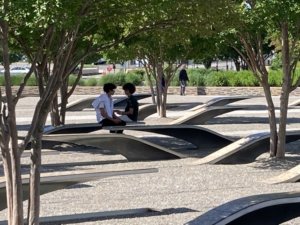
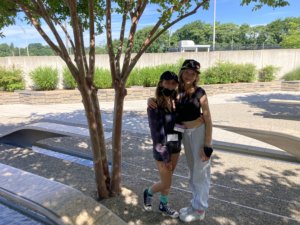
From there, we headed to the National Archives Building. Established in 1934 by FDR, the archives houses the three most important foundational documents of the United States: The Declaration of Independence, The Constitution, and the Bill of Rights. Seeing who flocked to what document first was interesting or random, we’re a bit uncertain, but we think we gained a little bit of insight into some of the kids by the choice they made the moment they entered the rotunda where those documents are stored.
Afterward, we sat on the grass outside the building and reflected on our time in DC. We’d seen more sites in 6 days than the average resident of the DC area sees in a decade. The kids were challenged to consider the problematic pasts of people who were instrumental in founding our country and pushing it forward. They were challenged to think about the issues they value, what to prioritize and why, what it means to be an activist, and much more. In all instances, they rose to the challenge and embraced it. For many of the chaperones on the trip, it was amazing to see how much they’d learned and evolved over their years at WNS, and we’re excited to see what they accomplish in the future once they leave us.
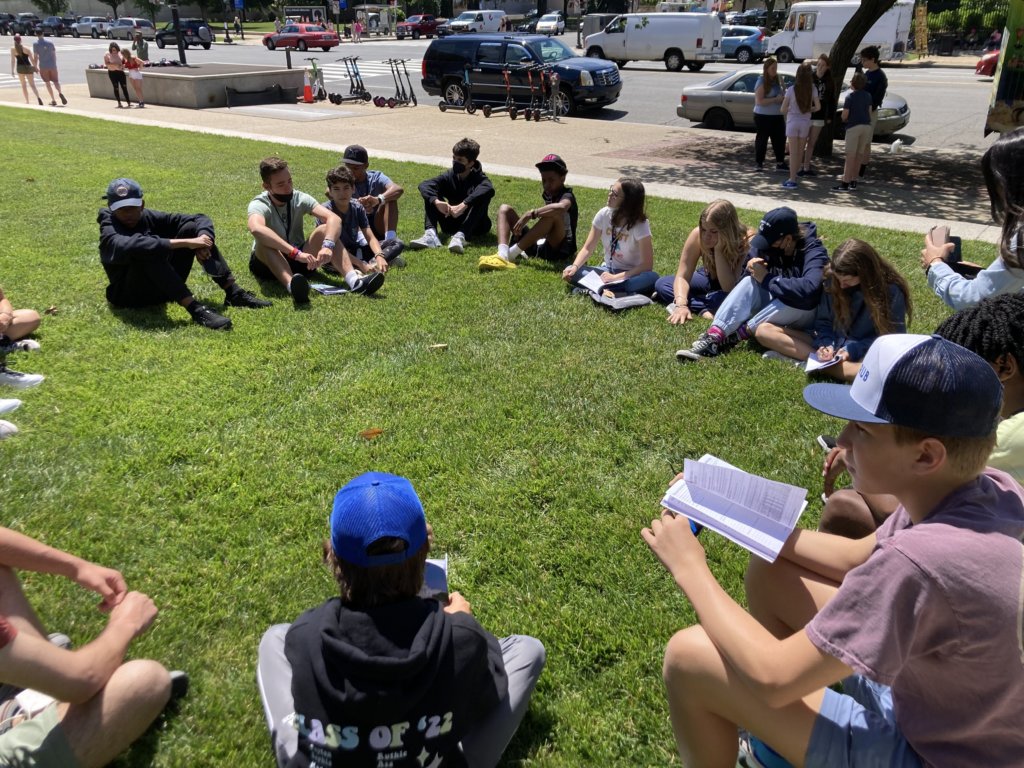
And that’s it! We’re basically done here, but we’ll leave you with some final nuggets—the things we learned about your kids on the trip and the their favorite things or main takeaways from their time in our Nation’s capital:
Here’s what the chaperones learned about your kids—
- Based on the spending habits of your kids, we believe the next billionaire will be the person who establishes a monopoly over the different kiosks selling food with high sugar content and DC themed souvenirs around DC to school tour groups.
- There are a handful of talented magicians amongst your kiddos based on the way their masks kept disappearing after each outdoor stop. (Don’t worry, we had plenty of extras we gave them before they got back on the bus again!)
- Daniel will always rush to the defense of a classmate when a chaperone redirects them. He might not even know what happened, but he’s there with a story and a defense. If anyone’s looking for a highly-talented PR spin doctor, he might be your man.
- The experiment carried out by your children to create a diet based on inverting the nutrition food pyramid was inconclusive. I’m sure next year’s class of WNSers will happily pick up where your kids left off.
Here are the students’ main takeaways, favorite parts, or both—
- Henry F: “You have to respect and honor symbolism. It’s important to accept history and to learn from it.”
- Devan: “My favorite part was Arlington National Cemetery and seeing the Tomb of the Unknown Soldier and the changing of the guard. I also really liked the African American Museum of History of Culture and United States Holocaust Museum.”
- Clare: “Walking around Georgetown and buying a cowboy hat at TJ Maxx was my favorite part of the trip!”
- Chloe: “I learned how important having memorials is so you can remember people who worked hard for this country. My highlight was getting to see the Abraham Lincoln Memorial.”
- Mattea: “I learned about different memorials and things I hadn’t known about before.”
- Jaeli: “I learned about important figures who have shaped our history today.”
- Max: “Everything is pretty expensive here.”
- Sophia: “I enjoyed getting to be on the trip and going to DC with my class.”
- Nathanael P: “I learned that I cared more about the experiences.”
- Nathanial V: “I learned the Capitol is now three times the size it originally was.”
- Presley: “Talking to the representative from Gomez’s staff was my favorite because it gave me insight on a typical day at Capitol Hill and gave me insight on how to get a similar job, if I want, when I’m older.
- Peyton: “How Thomas Jefferson had kids with someone he enslaved.”
- Zai: “Time flies when you’re having fun!”
- Caleb Y: “I learned that there is only one monument in DC (the Washington Monument) and the rest are memorials.”
- Caleb G: “My favorite part was seeing Old Town Alexandria and the African American Museum of history of Culture.”
- Dom: “I learned to open up and try new things.”
- Daniel: “Ranger Pete at Fredericksburg was my favorite thing.”
- Aylin: “I enjoyed seeing the view from the Air Force Memorial on day one.”
- Dawni: “I learned how to approach each memorial in an open and respectful way.”
- Jada: “My favorite part was walking around the Natural History Museum with my friends and seeing all the jewels.”
- Jade: “It feels great to learn about these historical figures and the balance of what is right and wrong and complexities and gray areas.”
- Charlie: “I learned that monuments can have a lot deeper meanings. If we dig deeper, we will find the truth behind these memorials.”
- Gavin: “I really enjoyed touring the African American Museum of History and Culture and the United States Holocaust Museum. It made me reflect on life and how fragile it can be.”
- Henry B: “The Holocaust Museum was interesting and I liked exploring Alexandria.”
- Zeke: “Monticello was my favorite part because it was cool to see where Thomas Jefferson lived and slept.”
- Sam S: “Thomas Jefferson ate the most exquisite French meal of the time—Mac ‘n cheese and ice cream.”
- Sam M: “What it means to be an activist.”
- Sadie: “Going to old town Alexandria, sitting by the fountain, talking with Zoë, that was all good.”
- Omar: “I learned the history of the good and bad of the individuals behind US history.”
- Magnus: “I like museums more than I thought.”
- Sebastian: “I liked the Library of Congress because it was dope.”
- Ella: “DC is where it all started for politics”
- Leila: “I learned that there is a lot of symbolism in art and past events. Respect comes through many different ways.”
- Asa: “I’ve been looking at a lot of things wrong and the memorials have given me a new perspective.”
- Selah: “One takeaway was that I have to check-in with myself, physically and mentally. My favorite part of being in DC was the African American Museum of History and Culture because it was beautiful and they did a great job jumping through history. I felt comfortable there.”
- Ruthie: “I learned about the history of US presidents and a highlight was getting to see Thomas Jefferson’s house, and the good and bad of what he did.”
- Olivia: “I learned about Emmett Till. That was one of the biggest things that I learned.”
- Zoë: “I learned about memorials and the different details in each memorial. My favorite part was the Library of Congress and the Washington Monument.”
- Maddie: “I found the Holocaust Memorial to be very impactful.”
- Hamish: “Even if you don’t want to eat somewhere for dinner, it’s more important to have fun with your friends instead.”
- Noah: “I learned our class can be kind of crazy, but we’re always respectful at memorials.”
